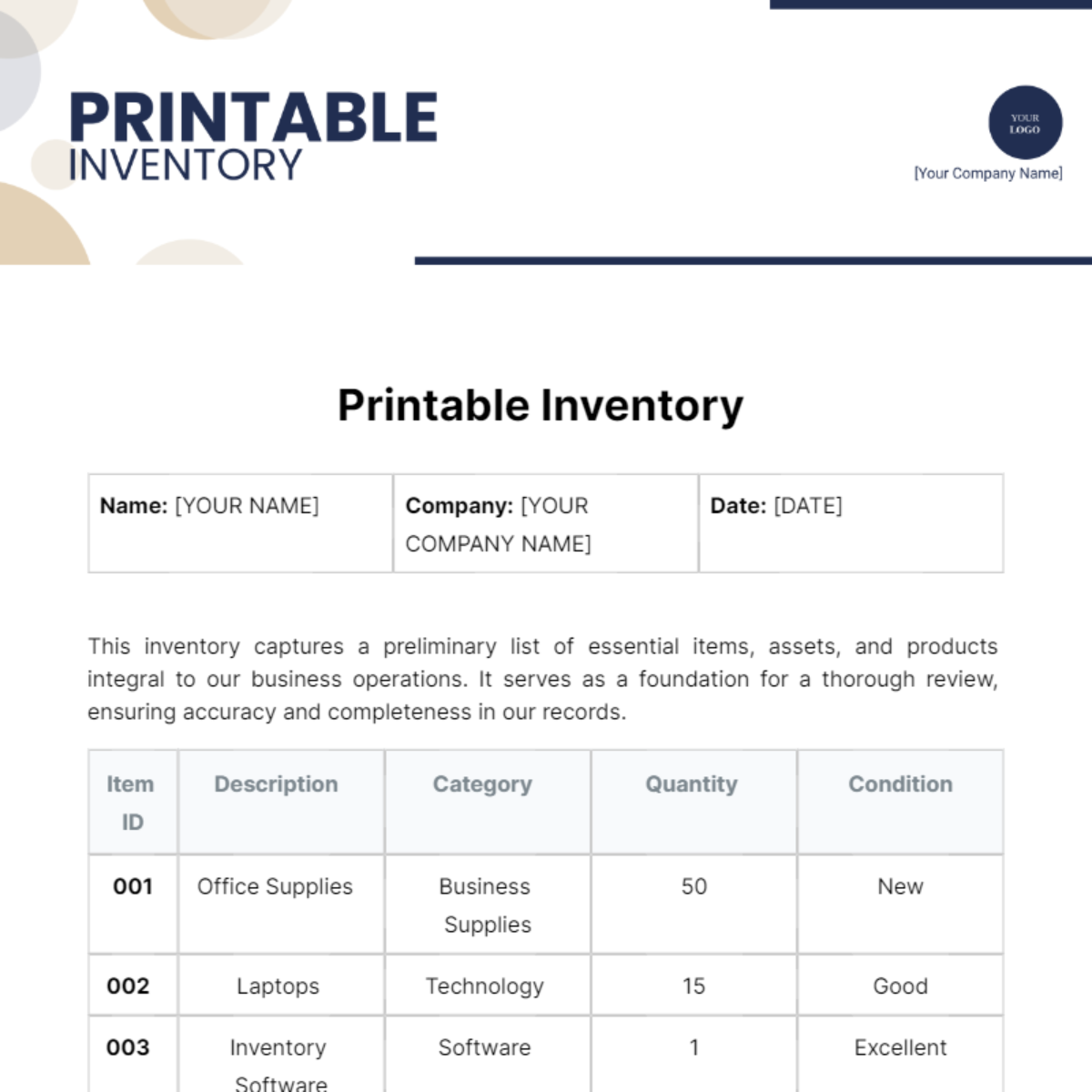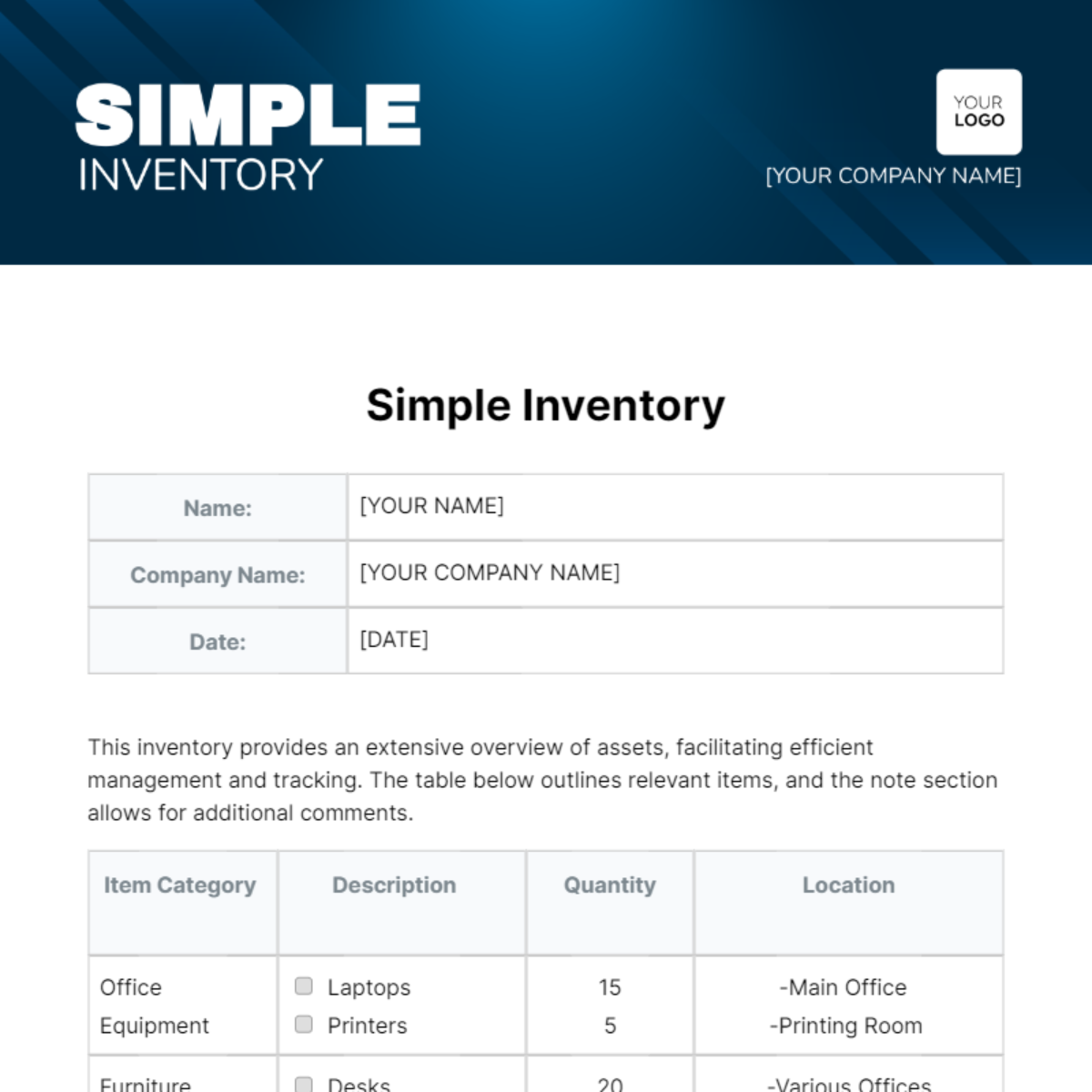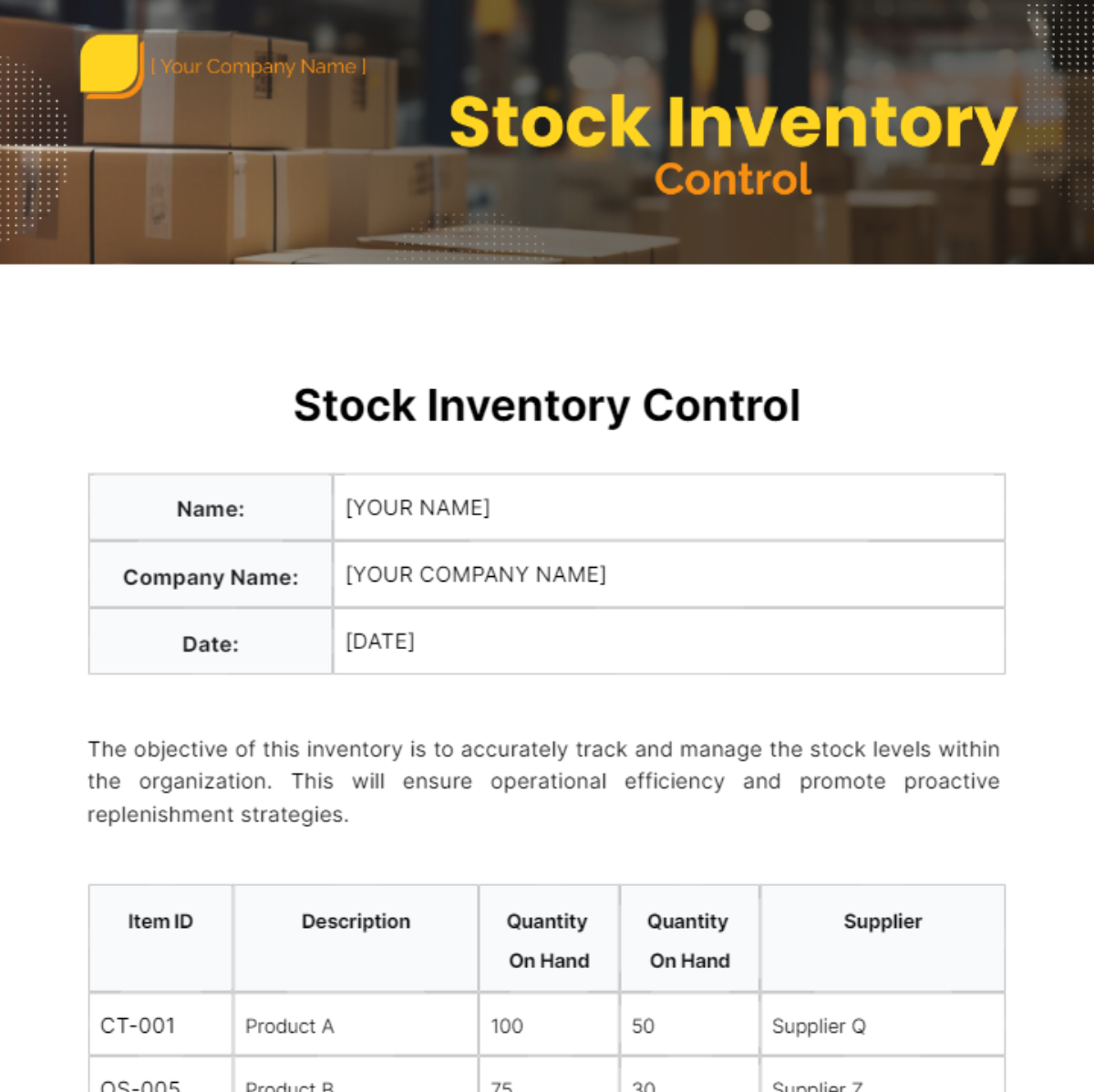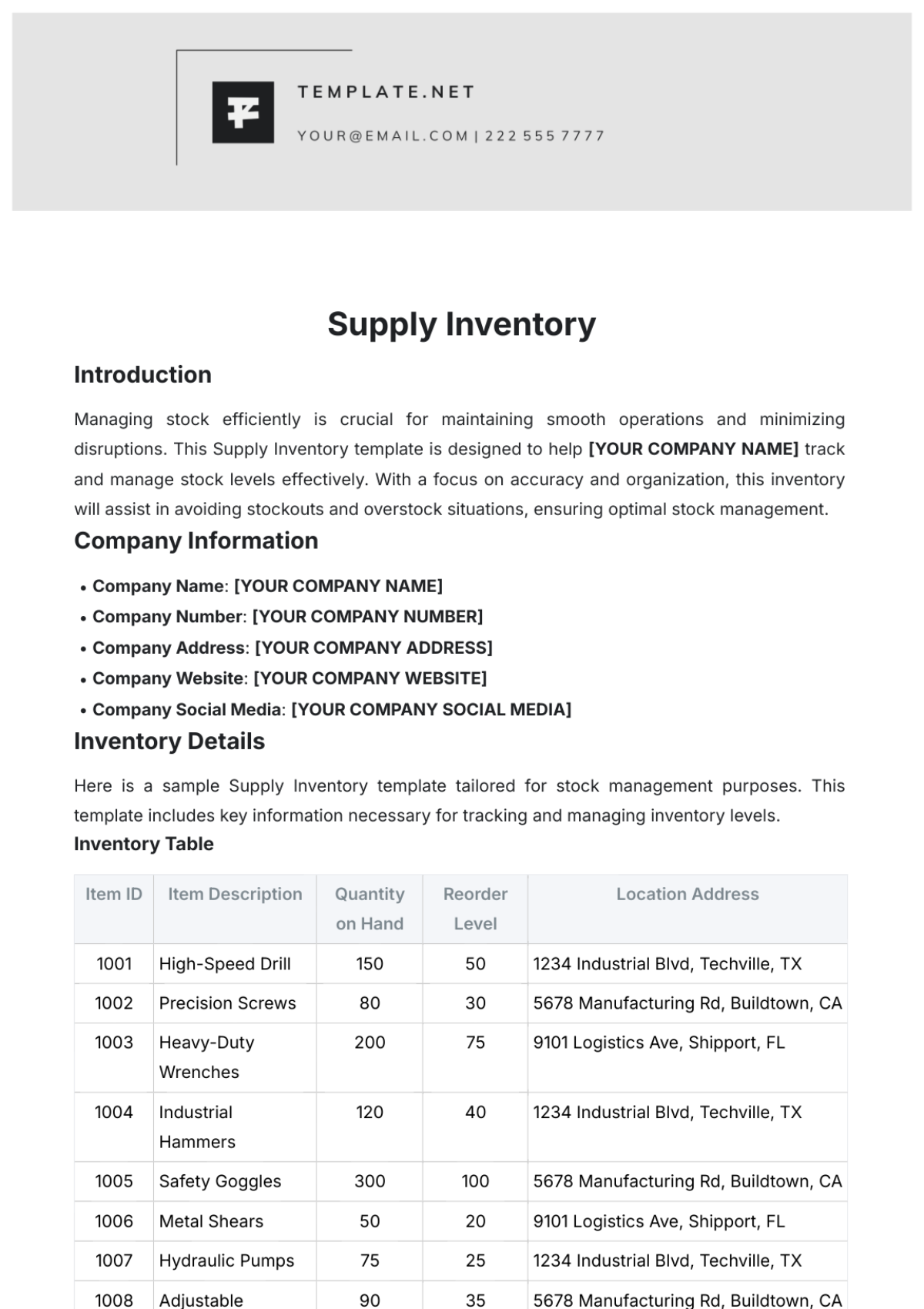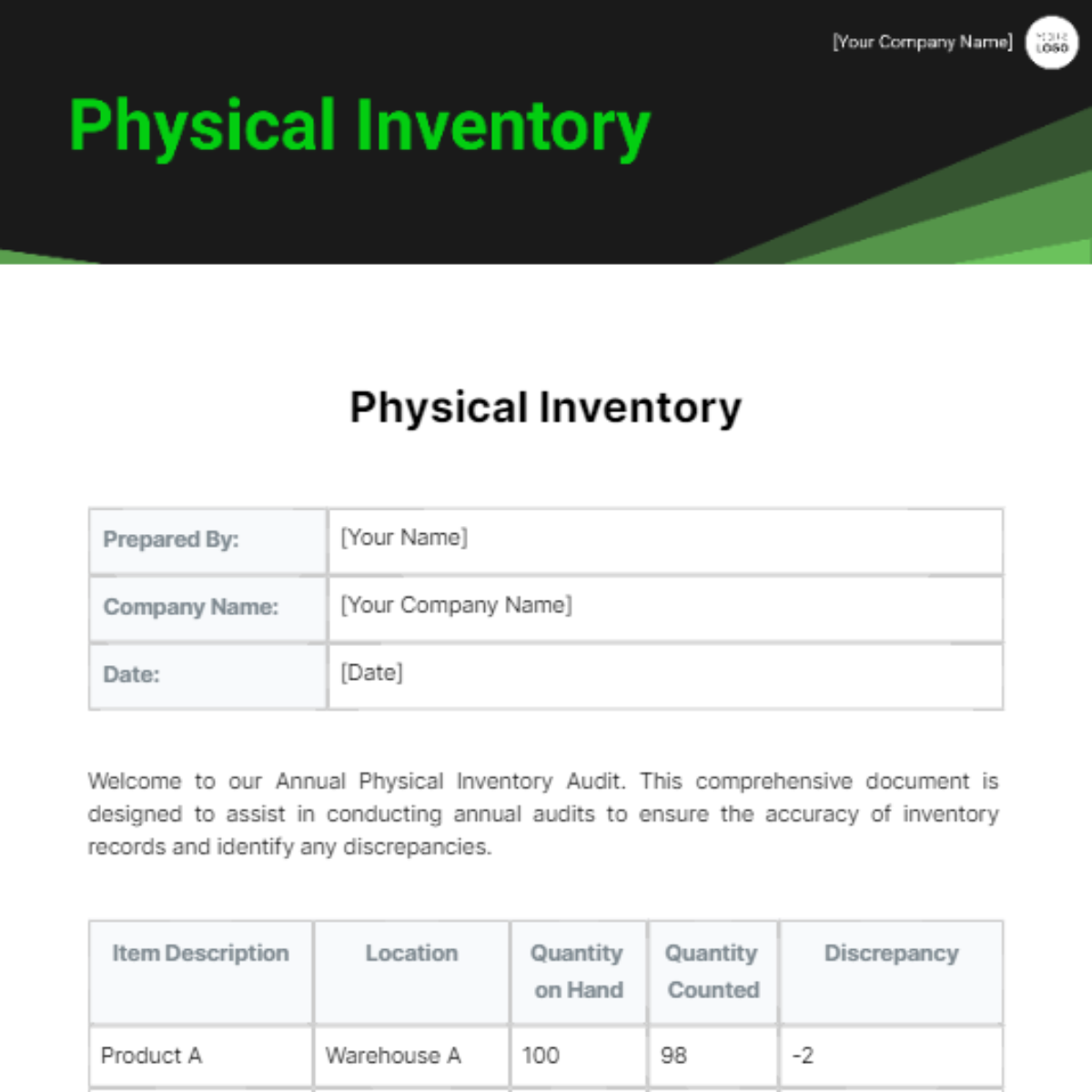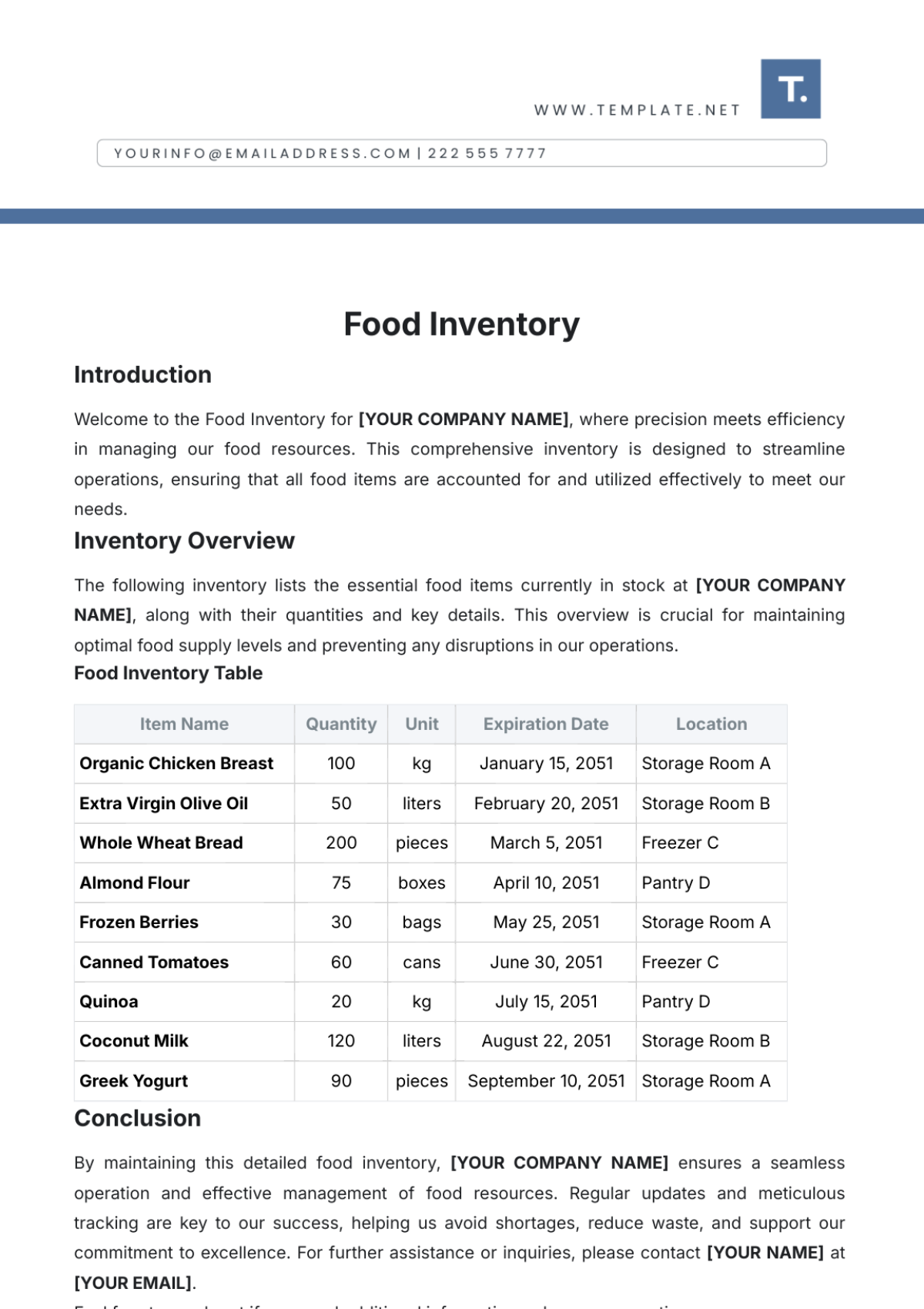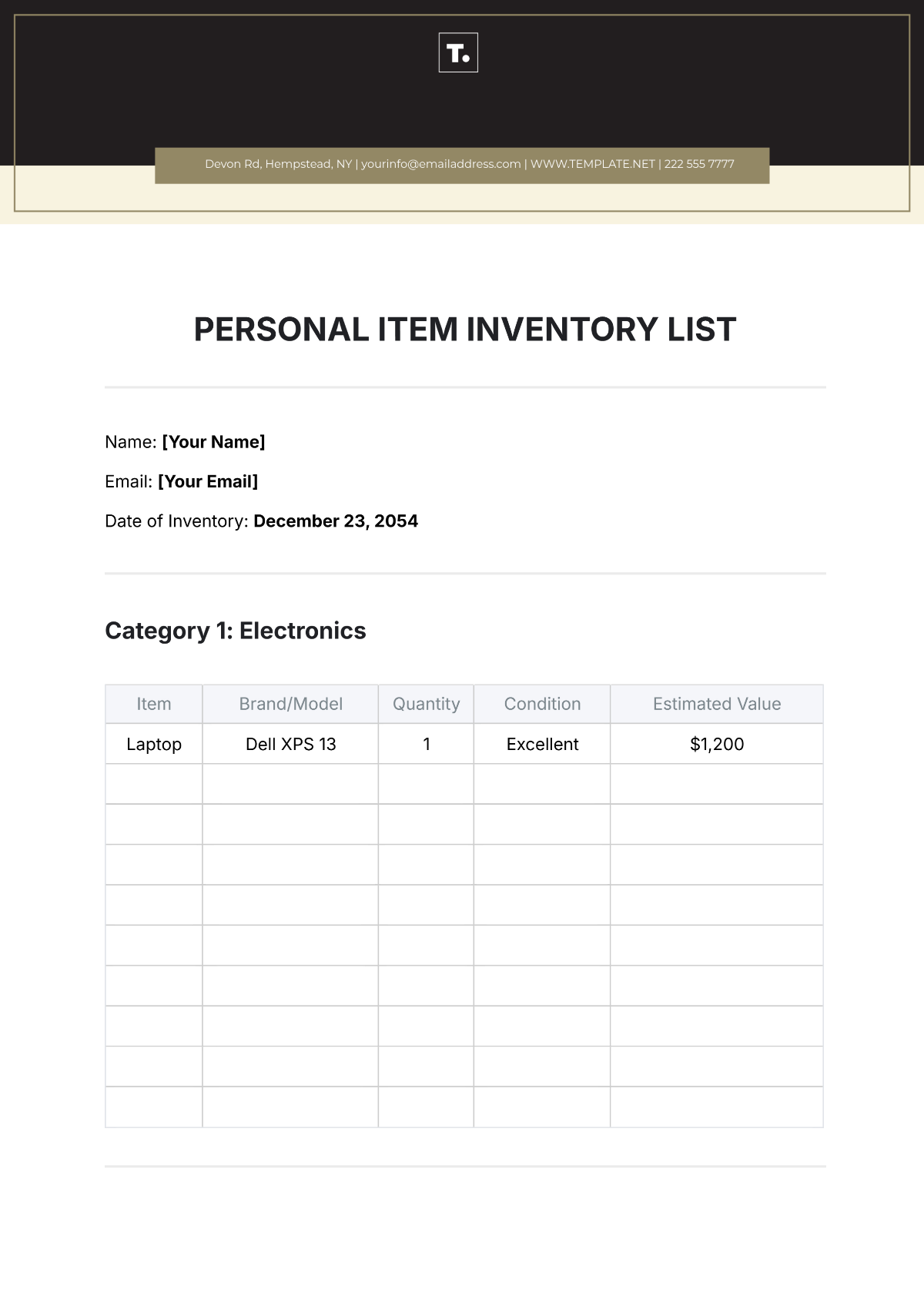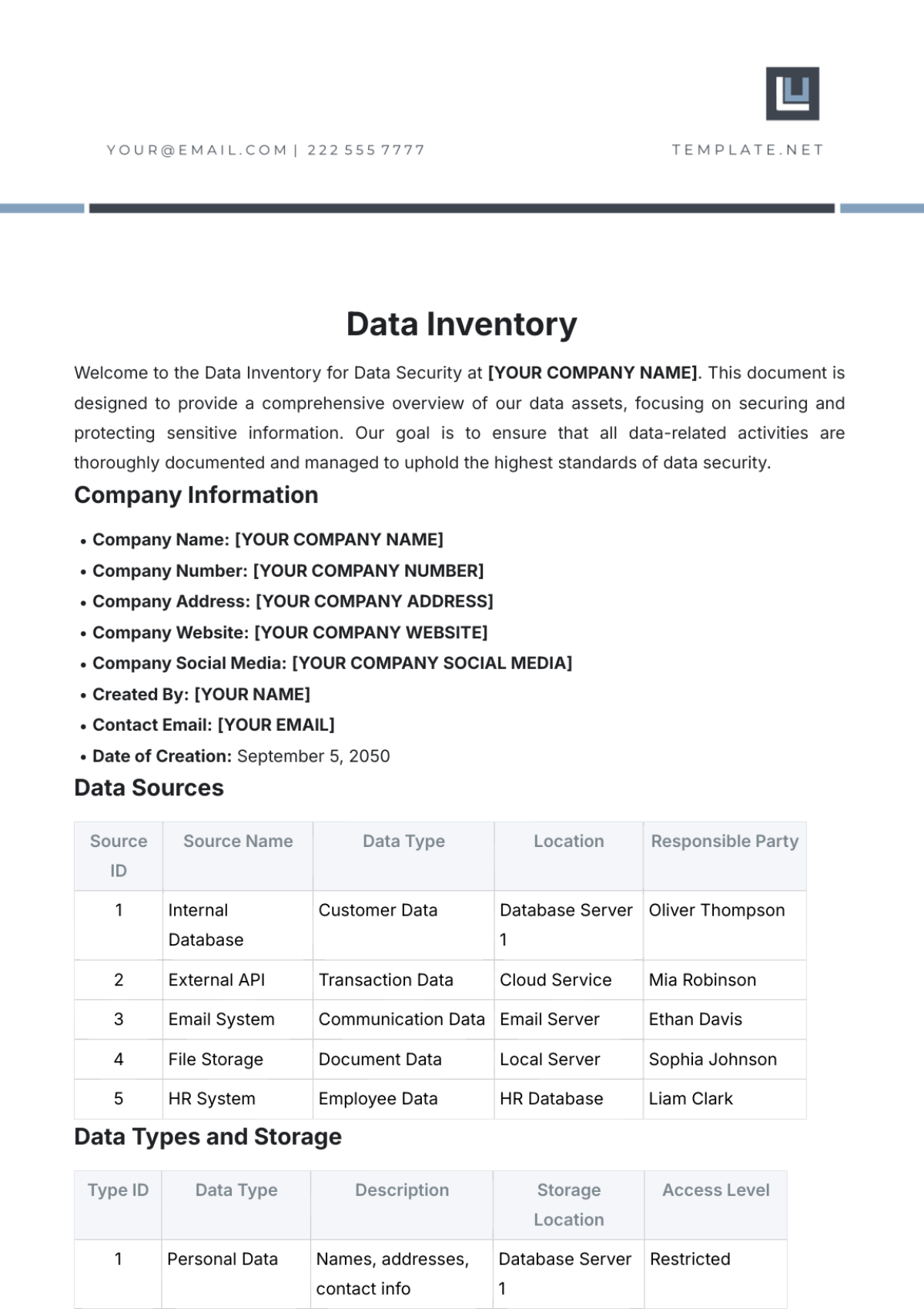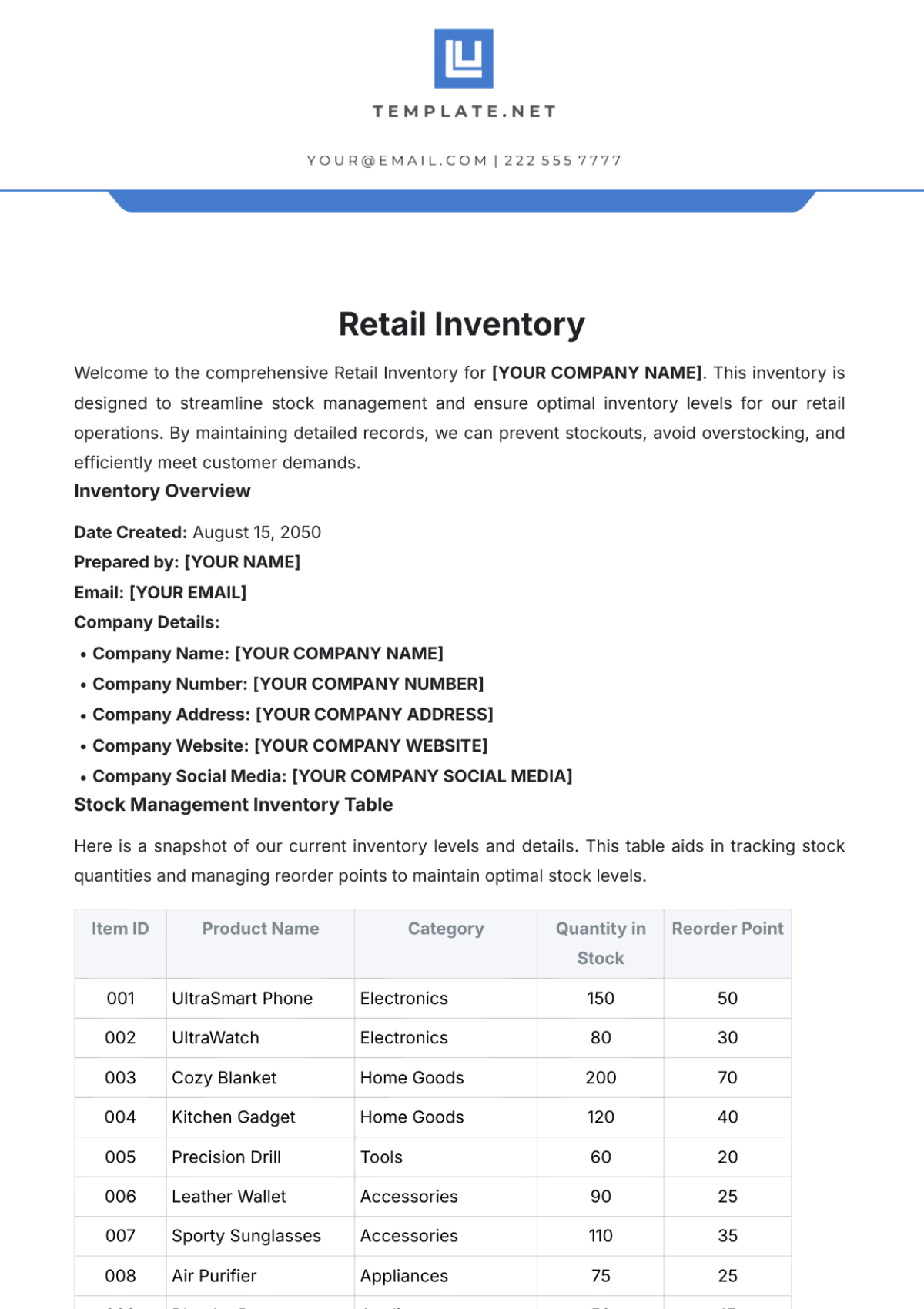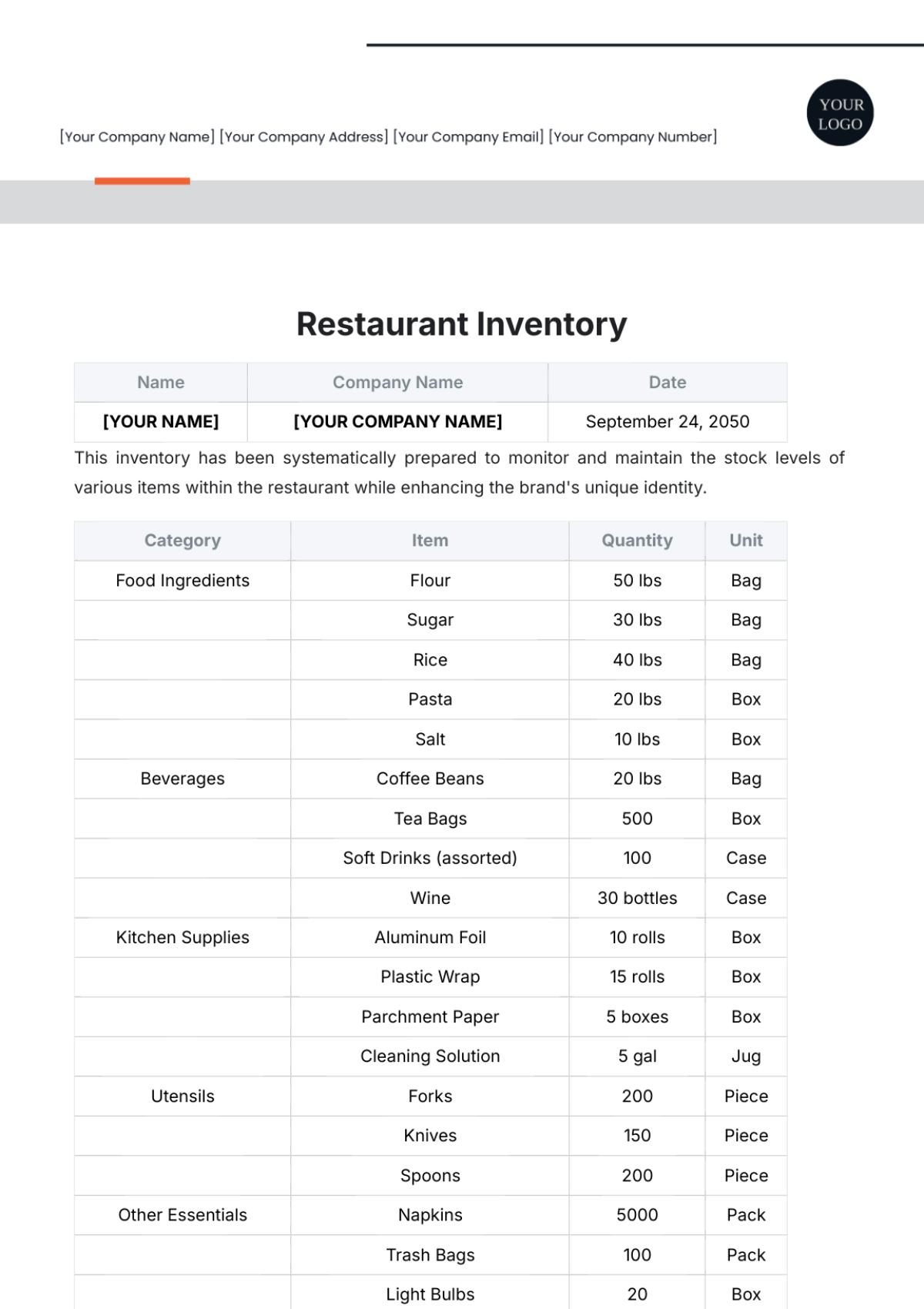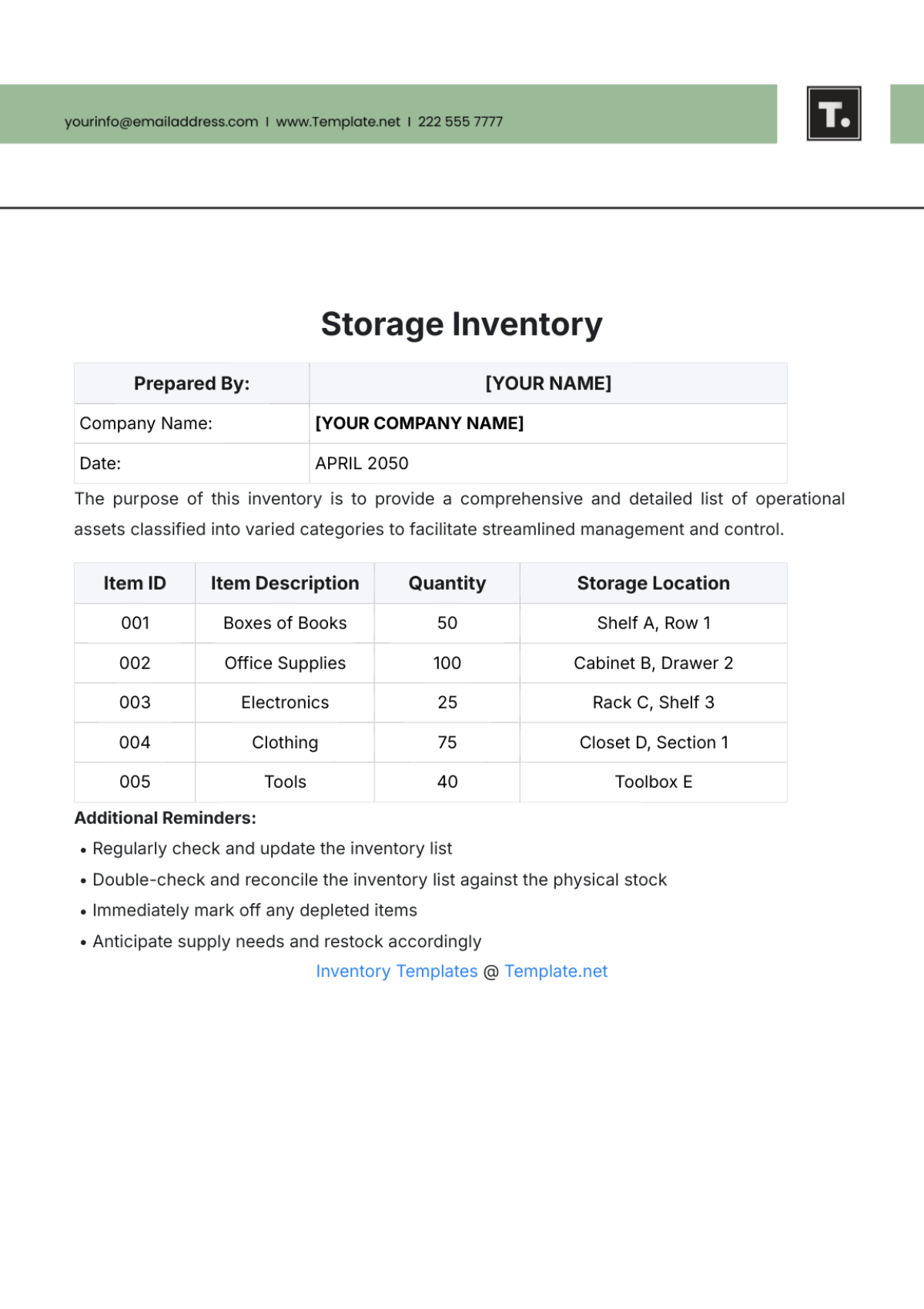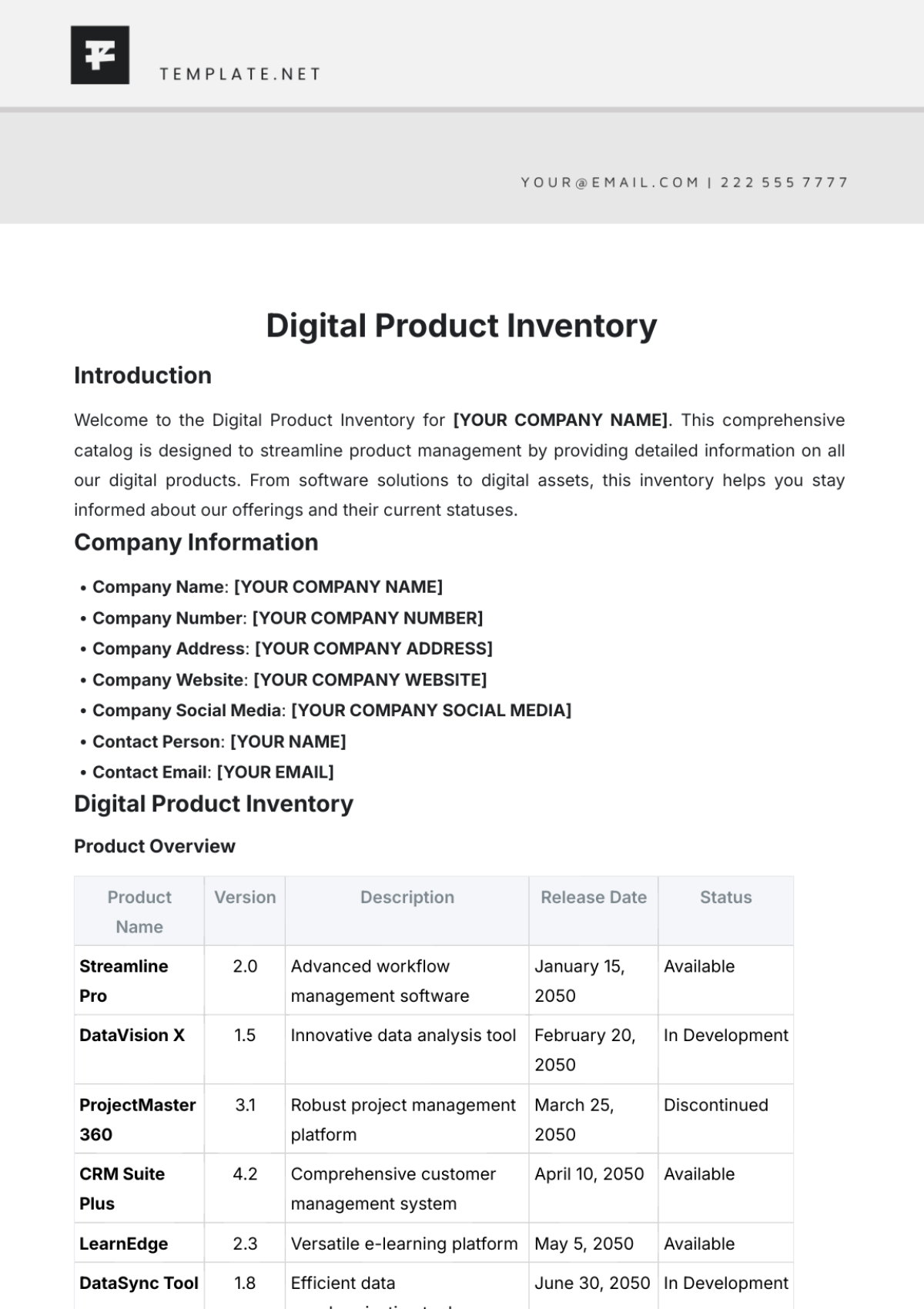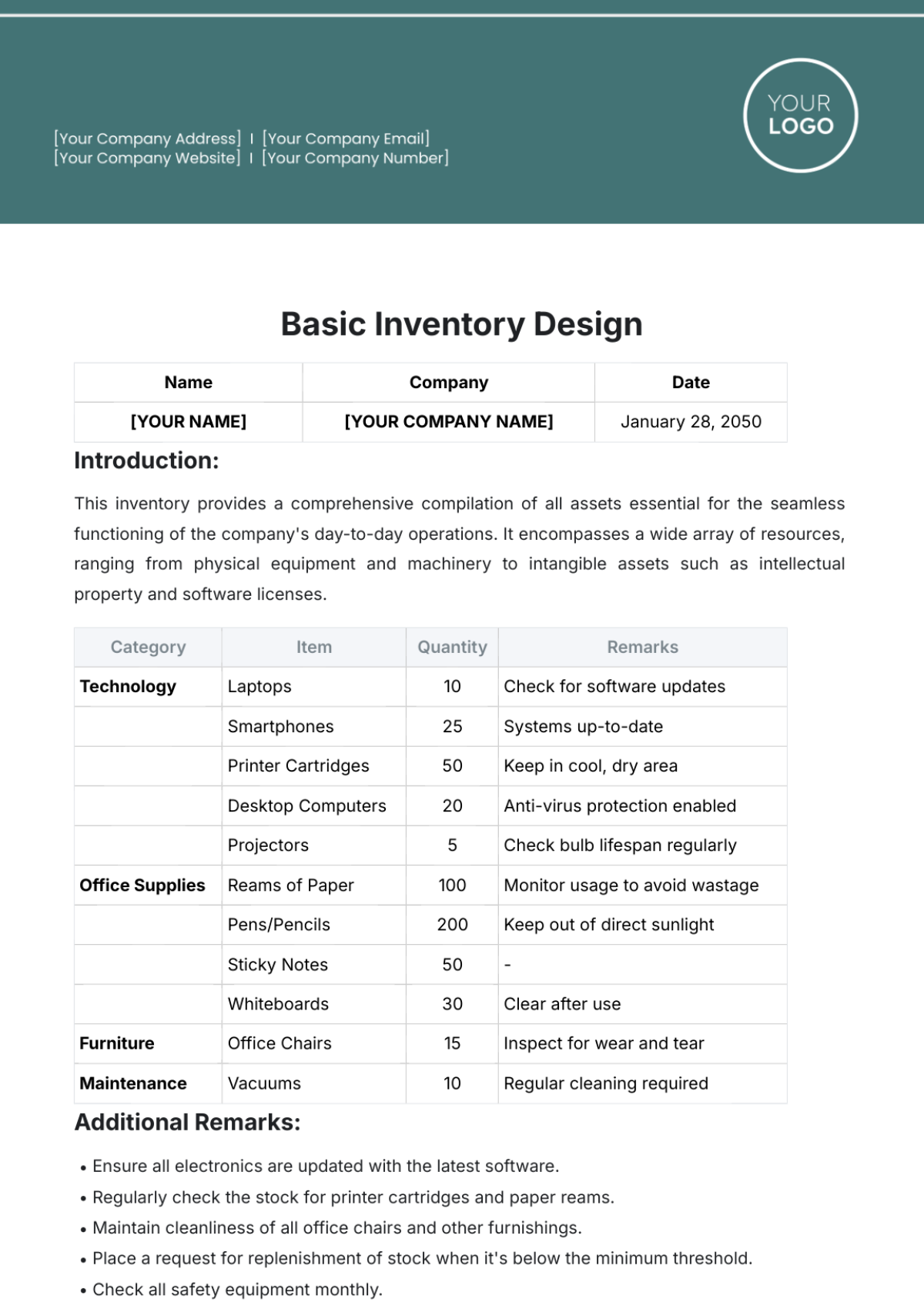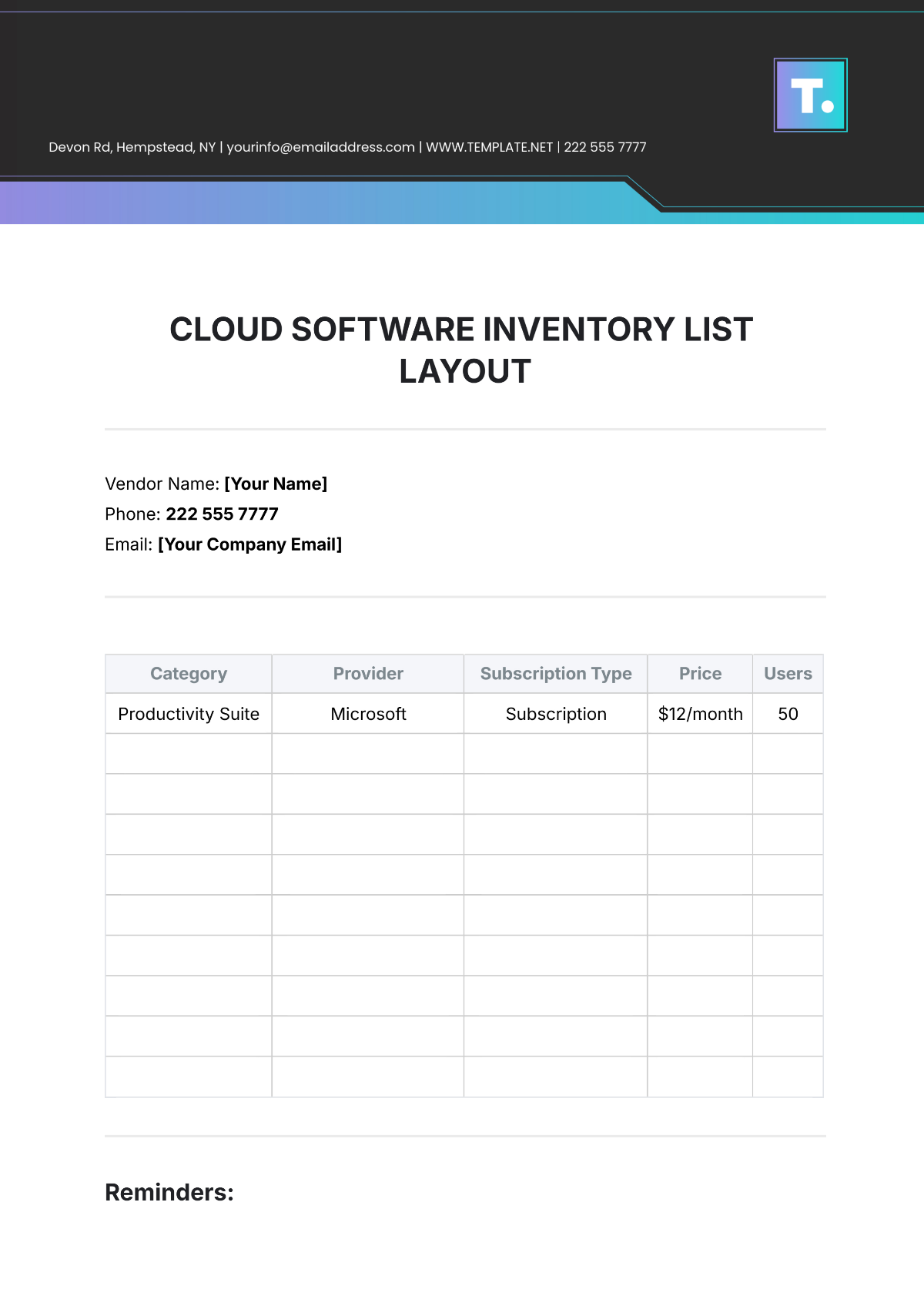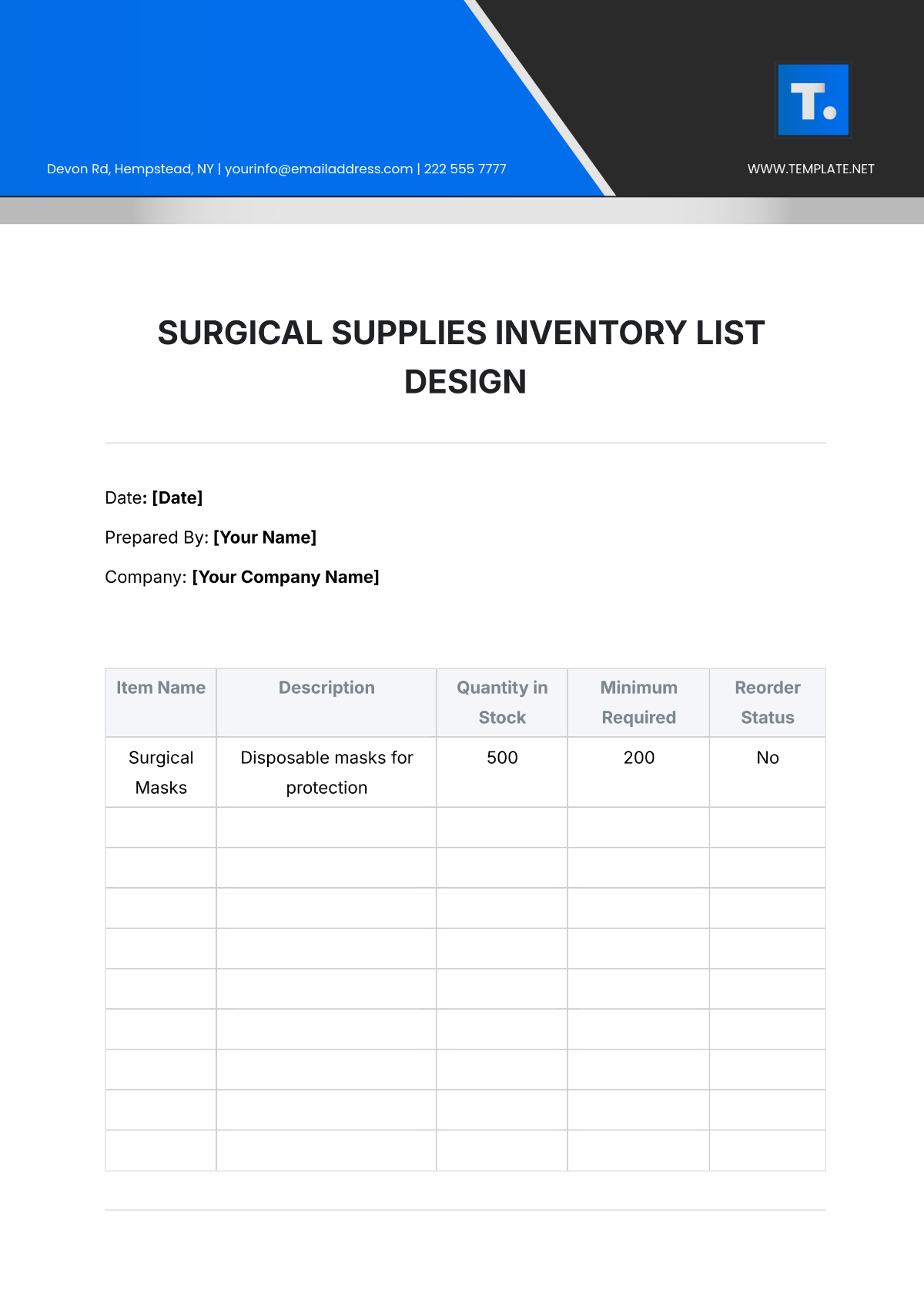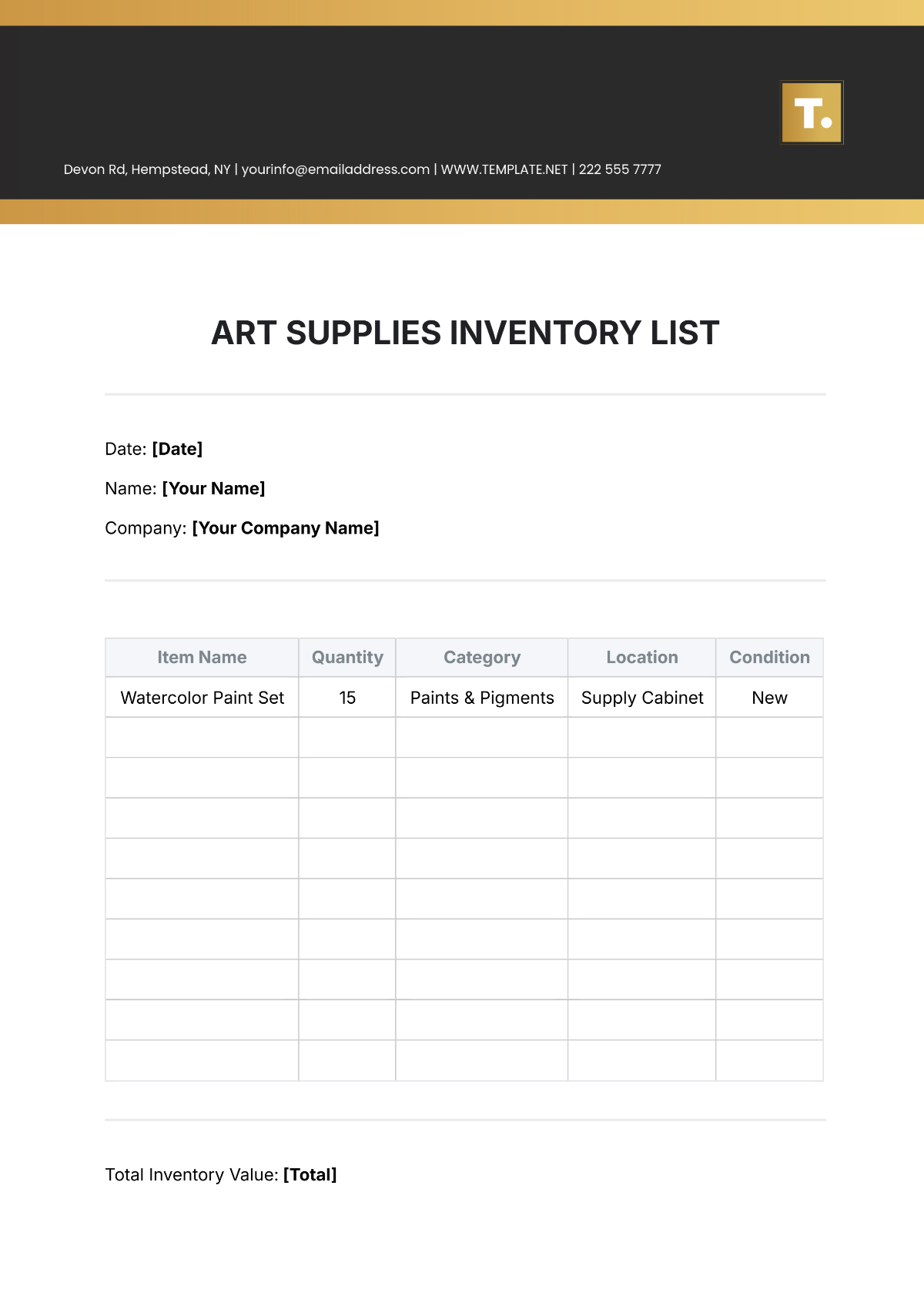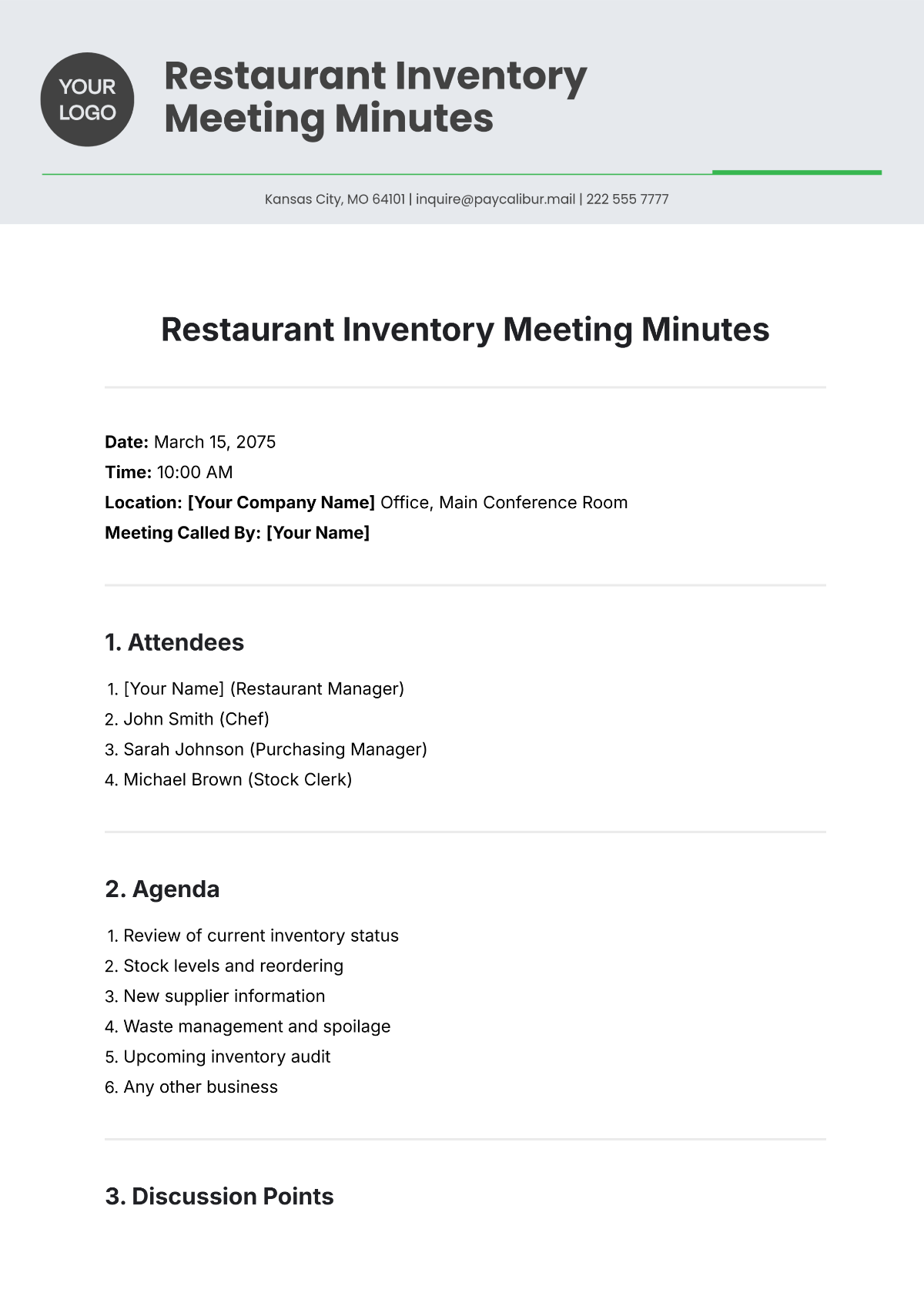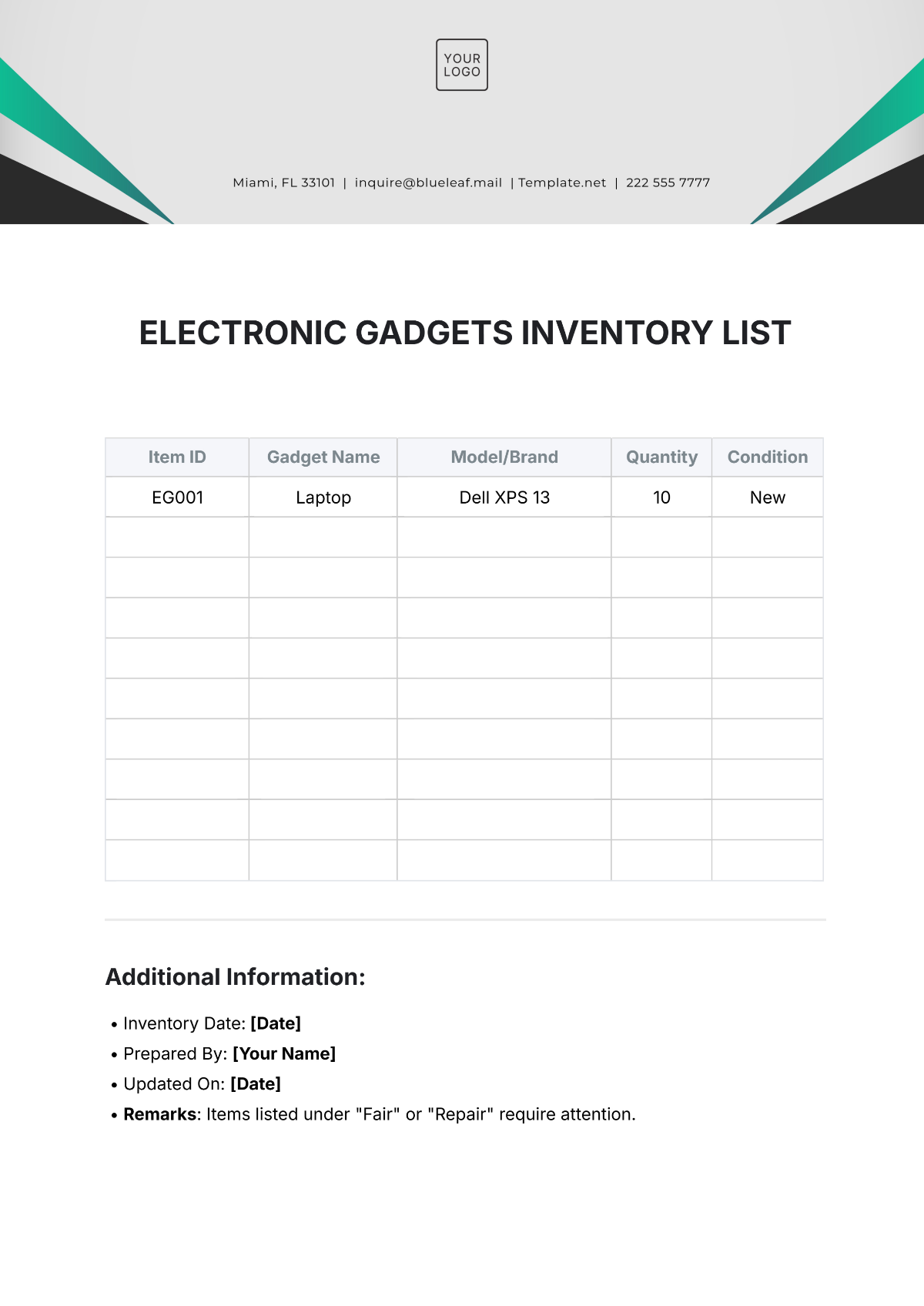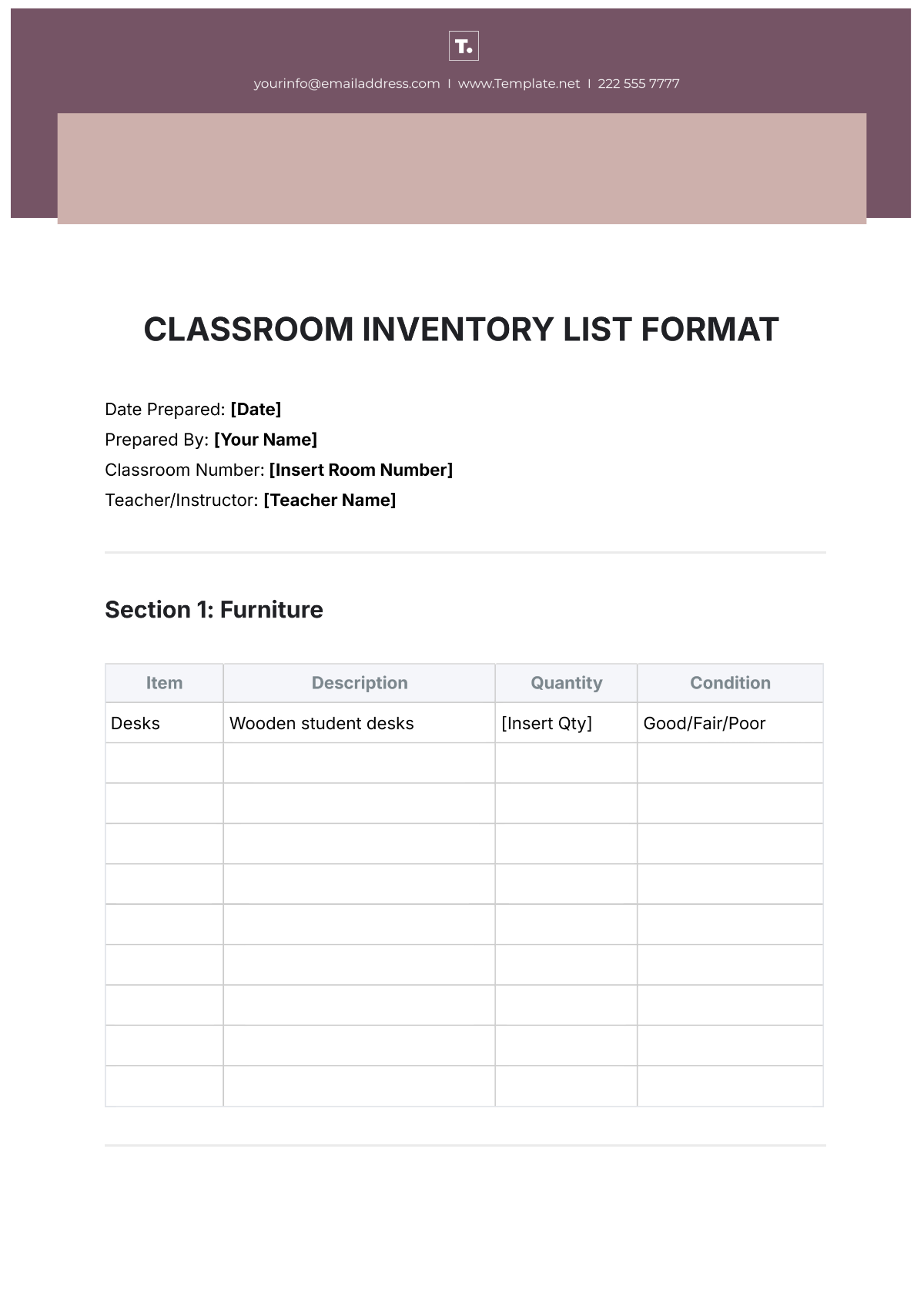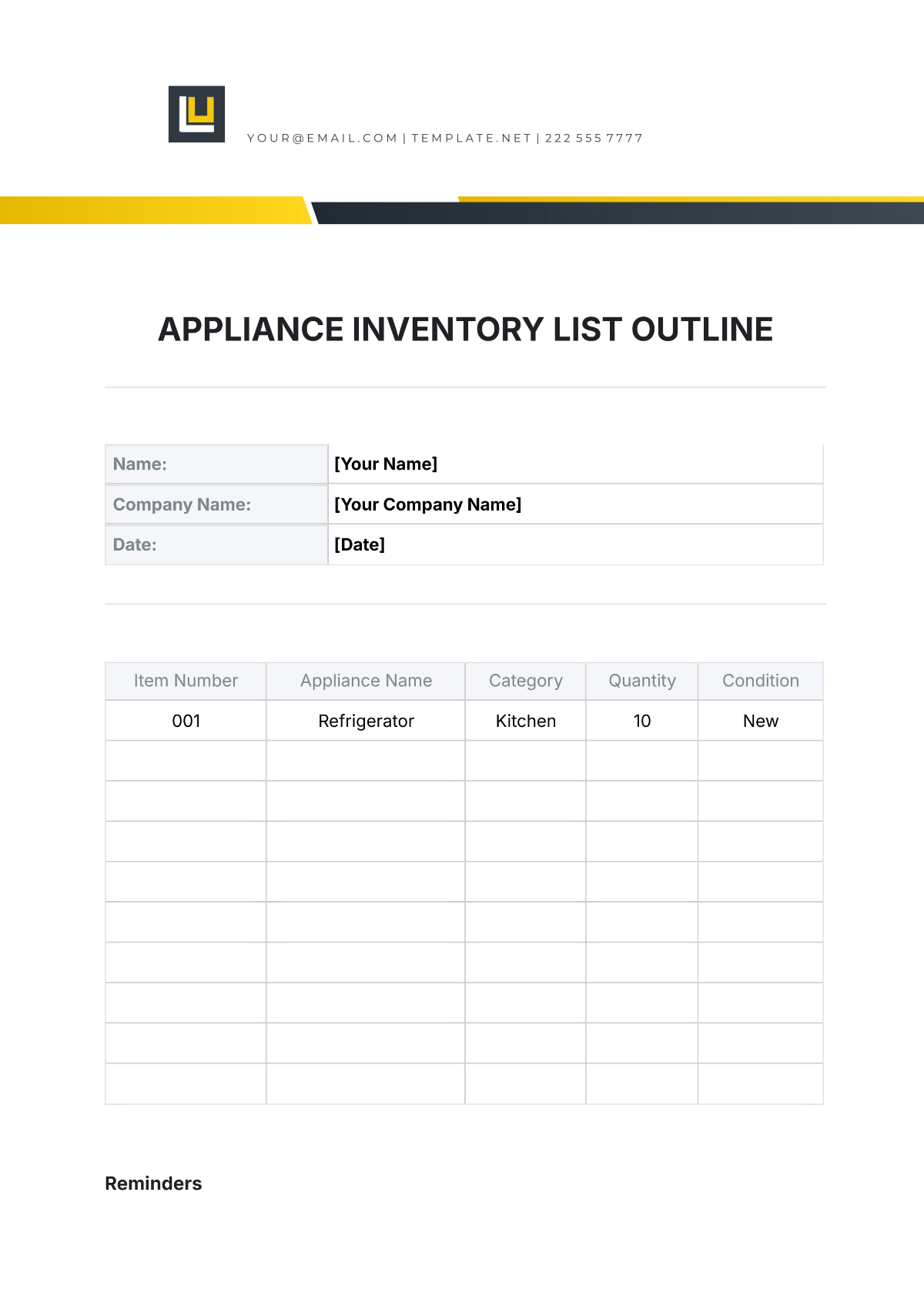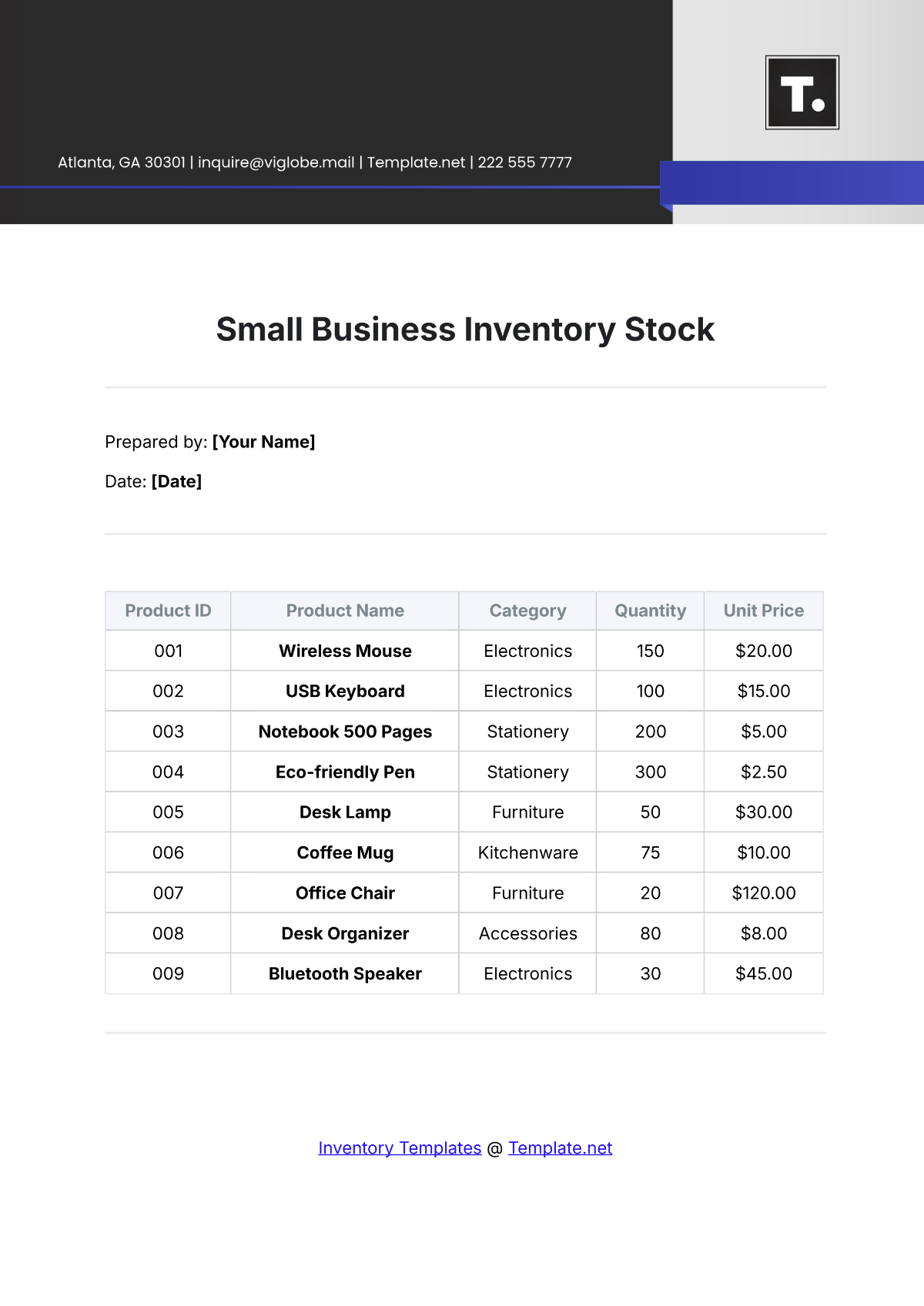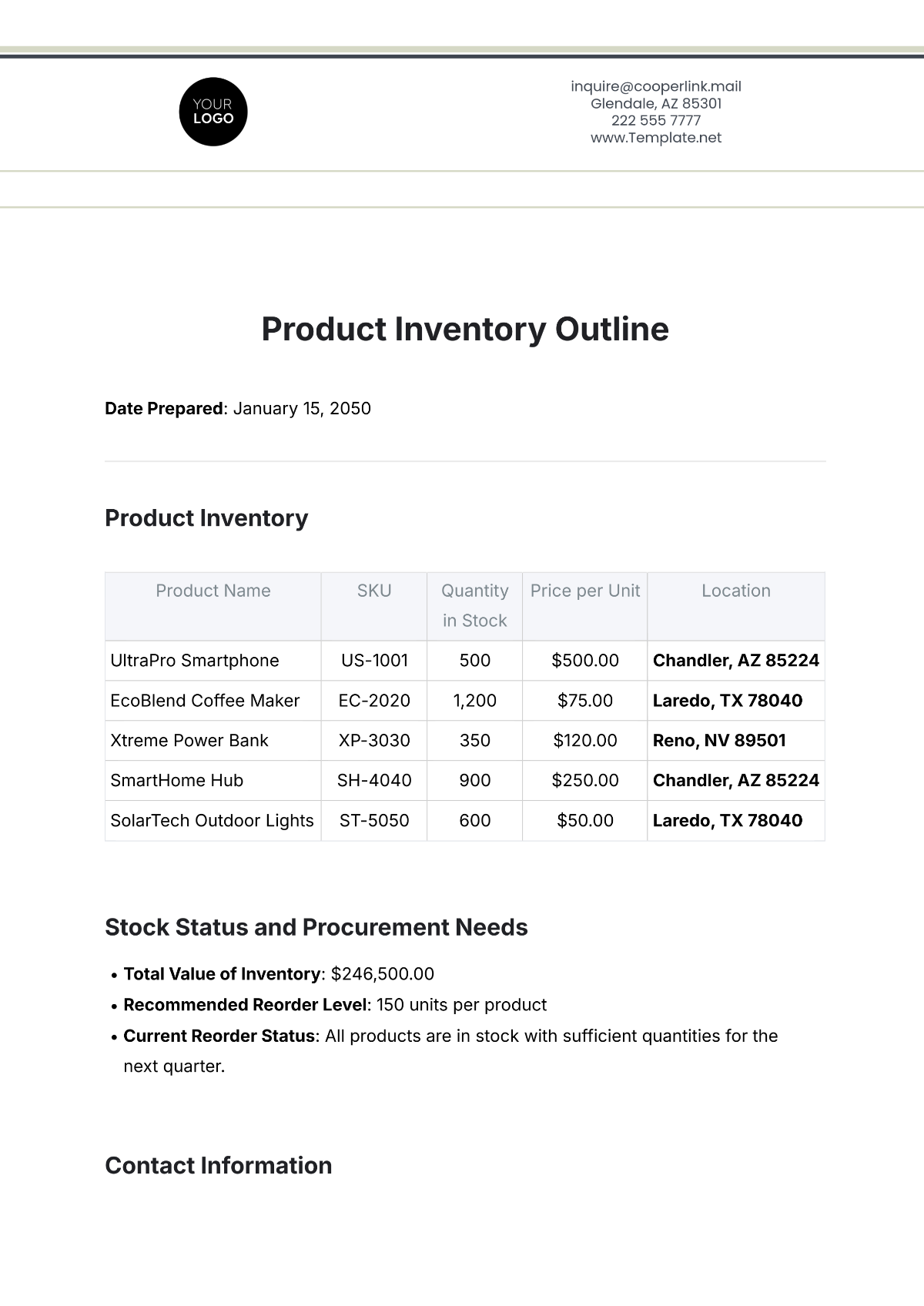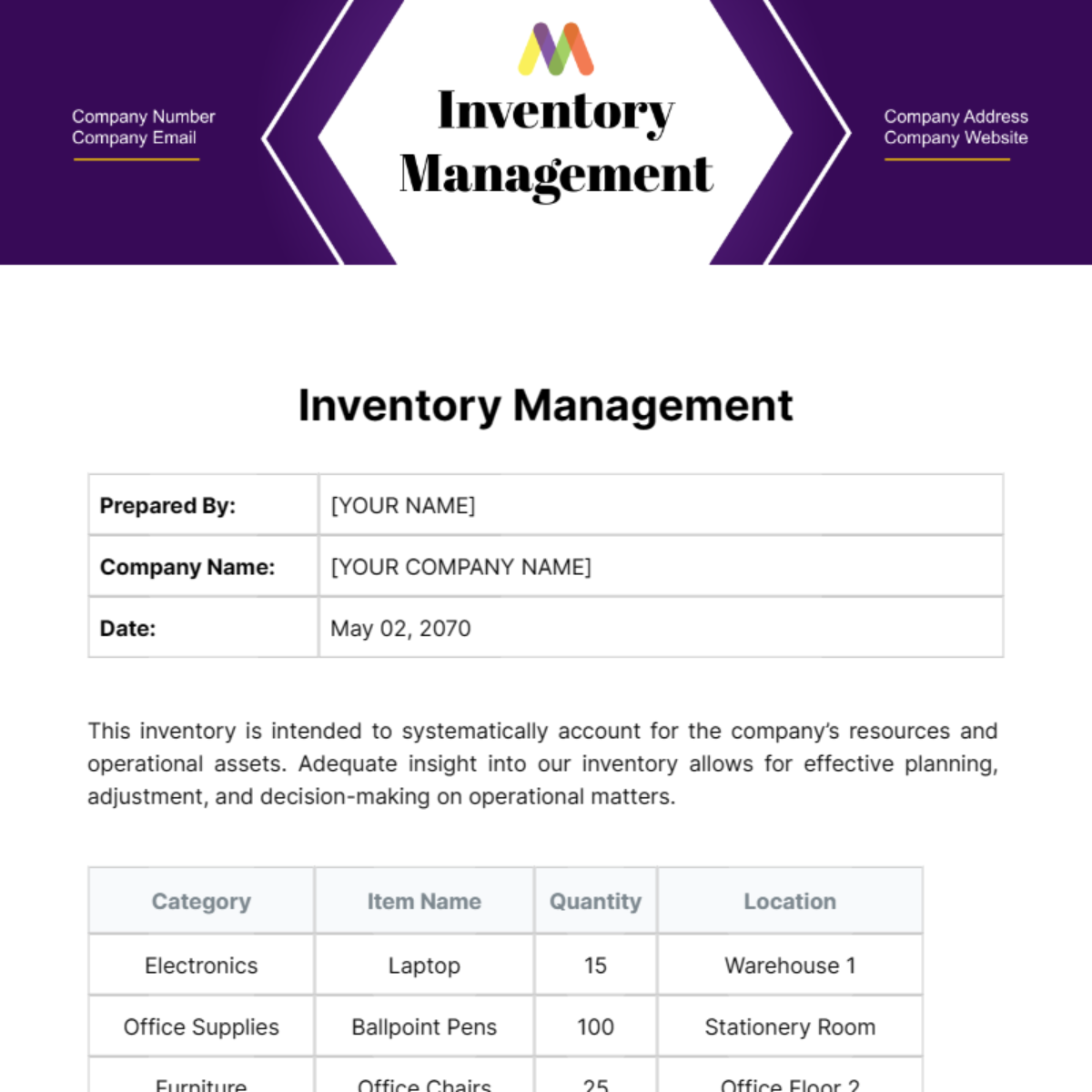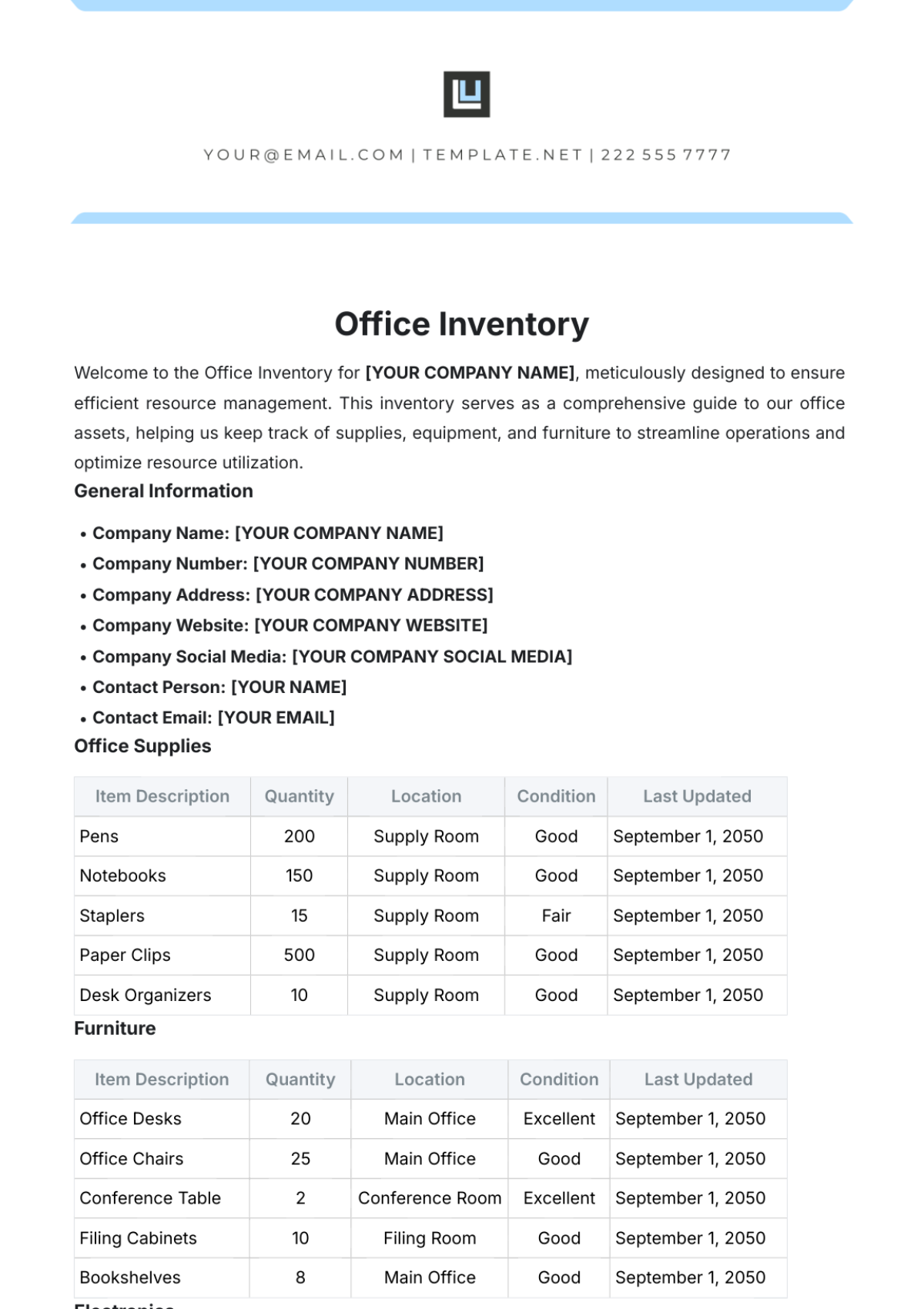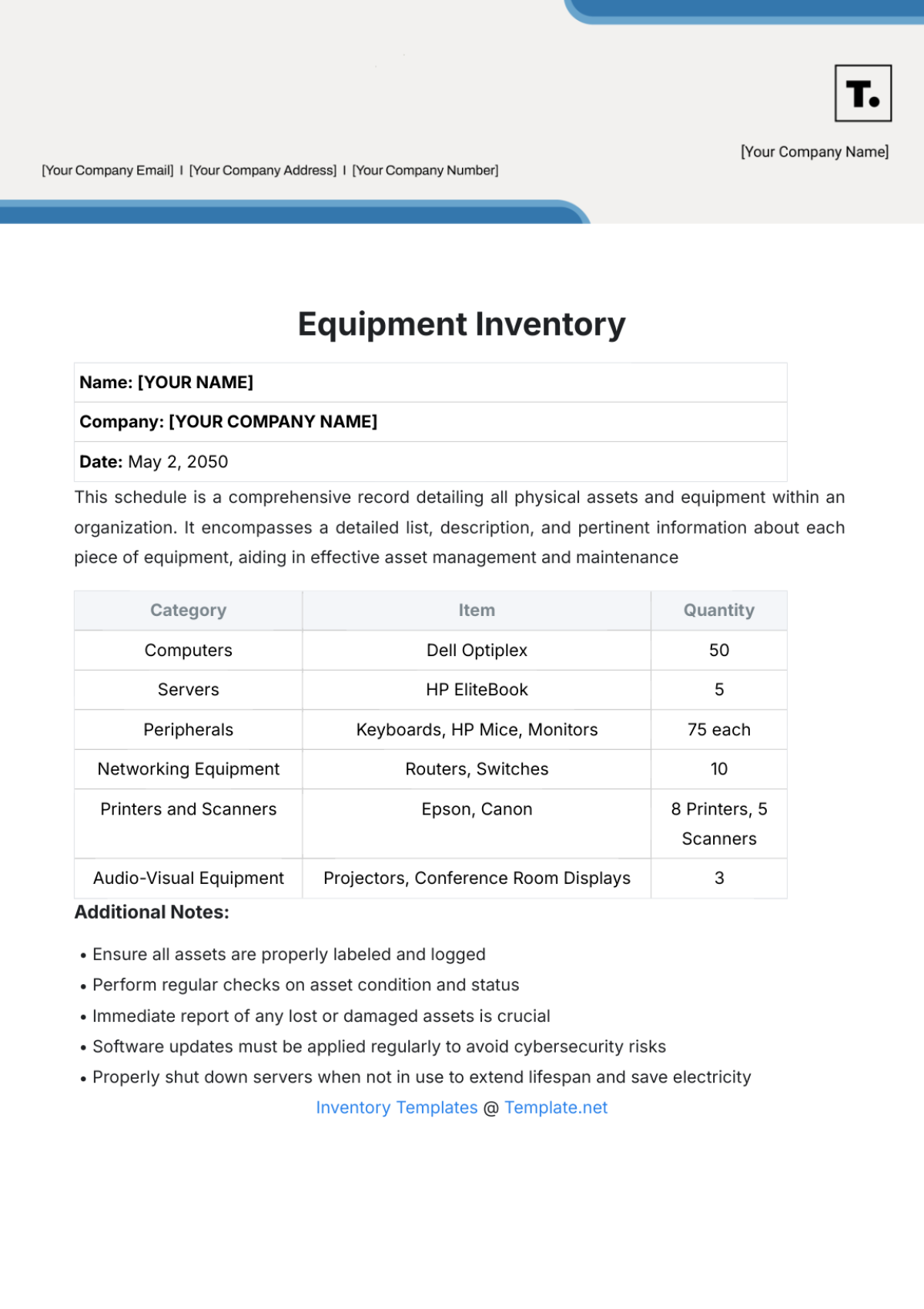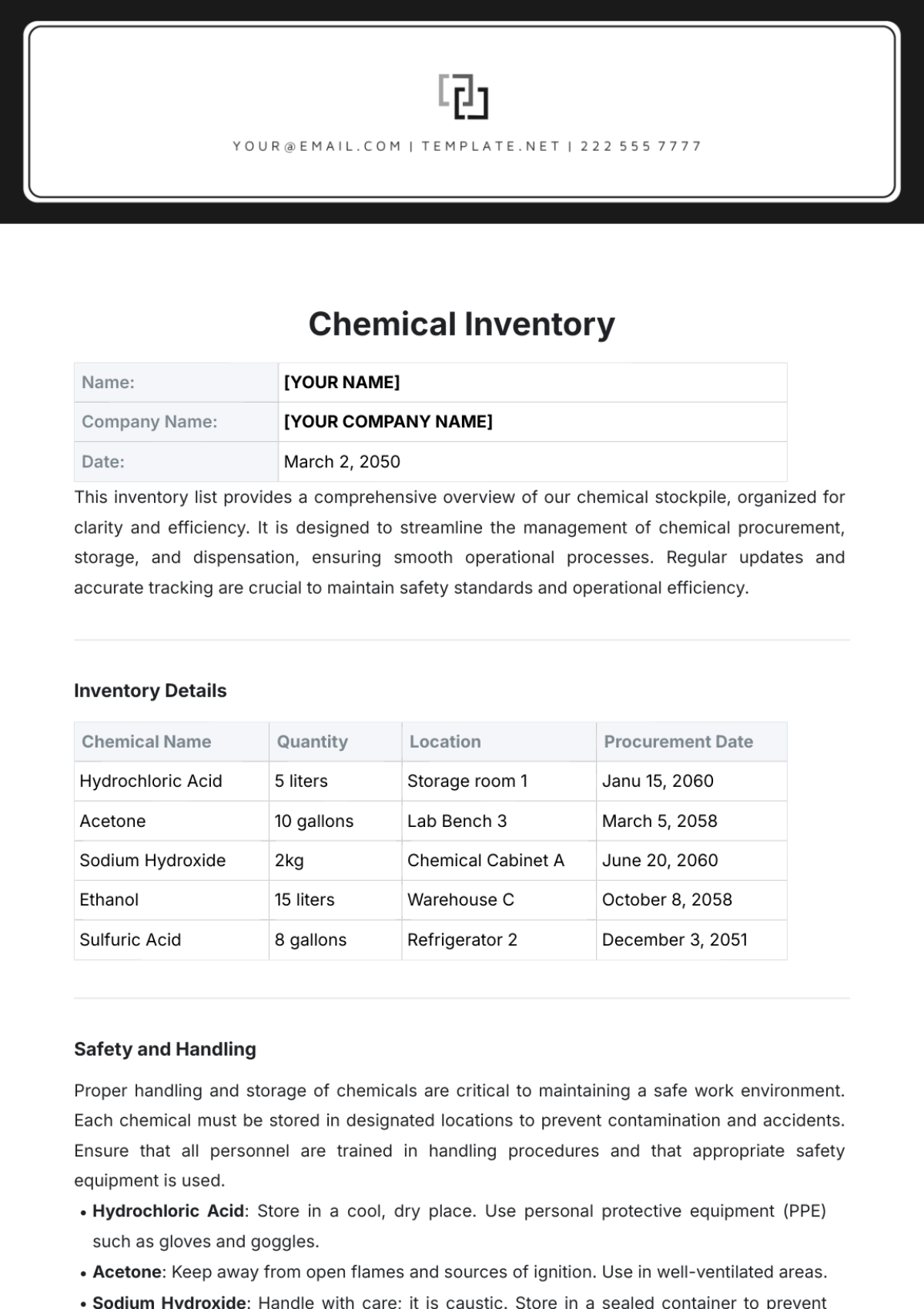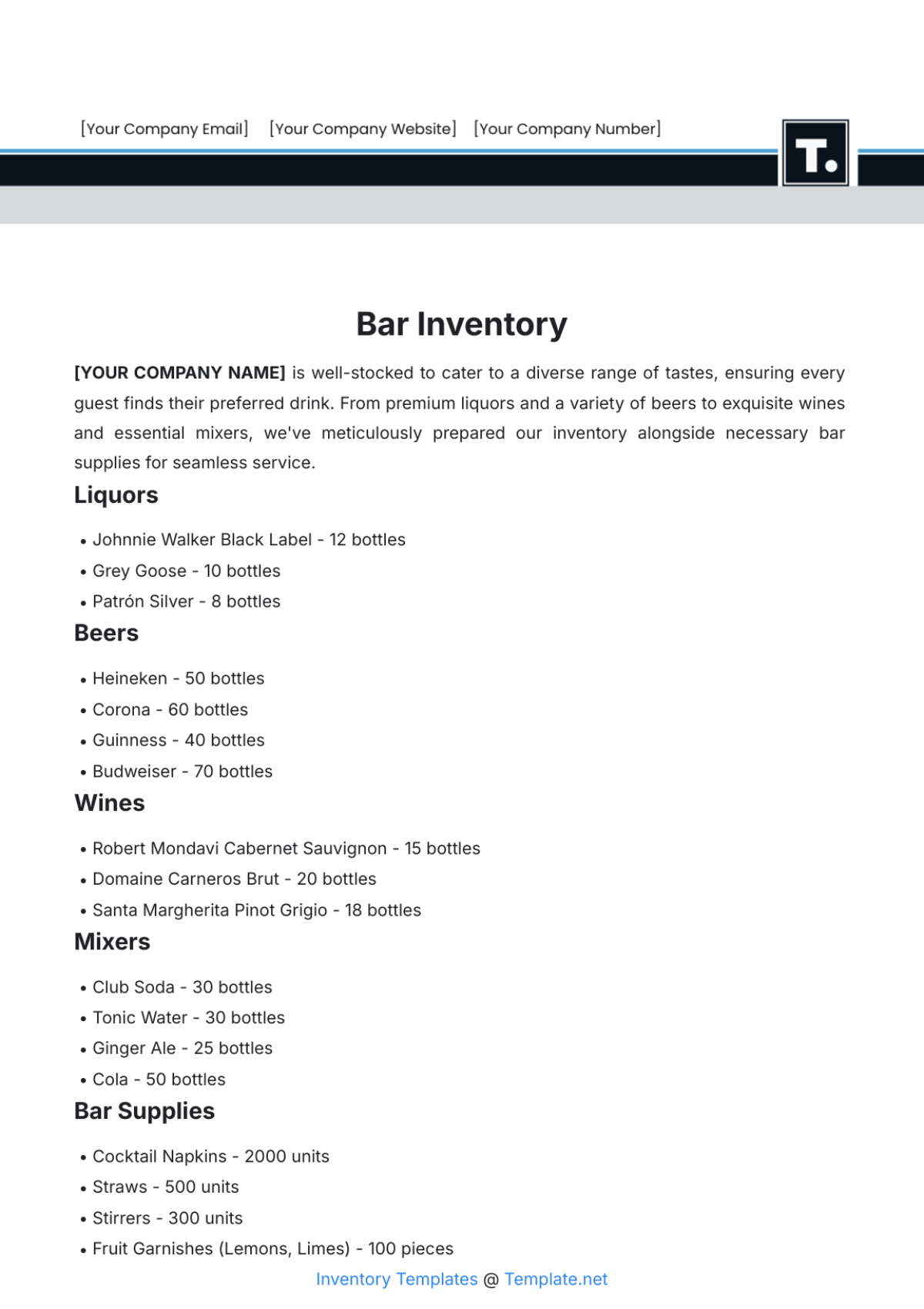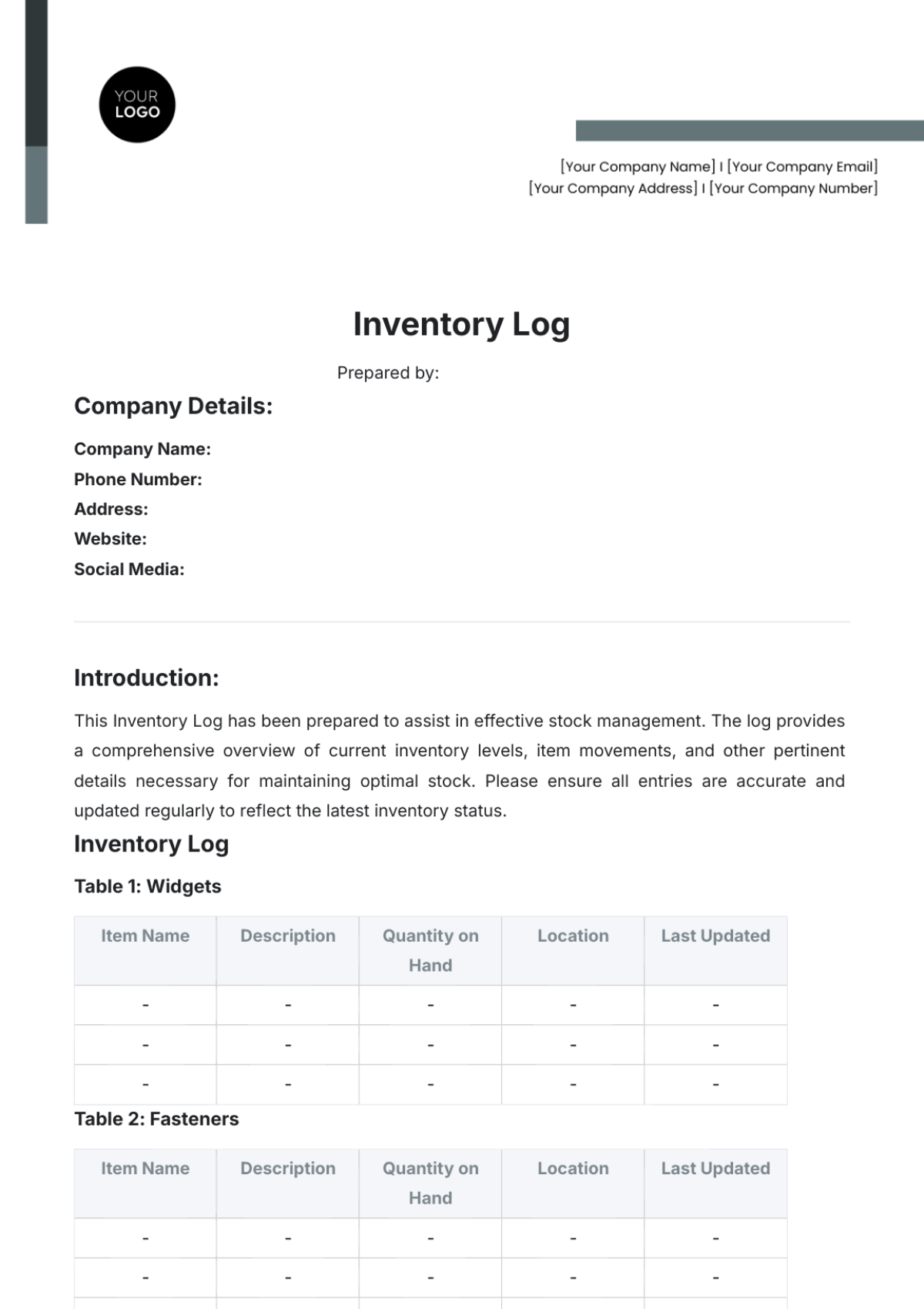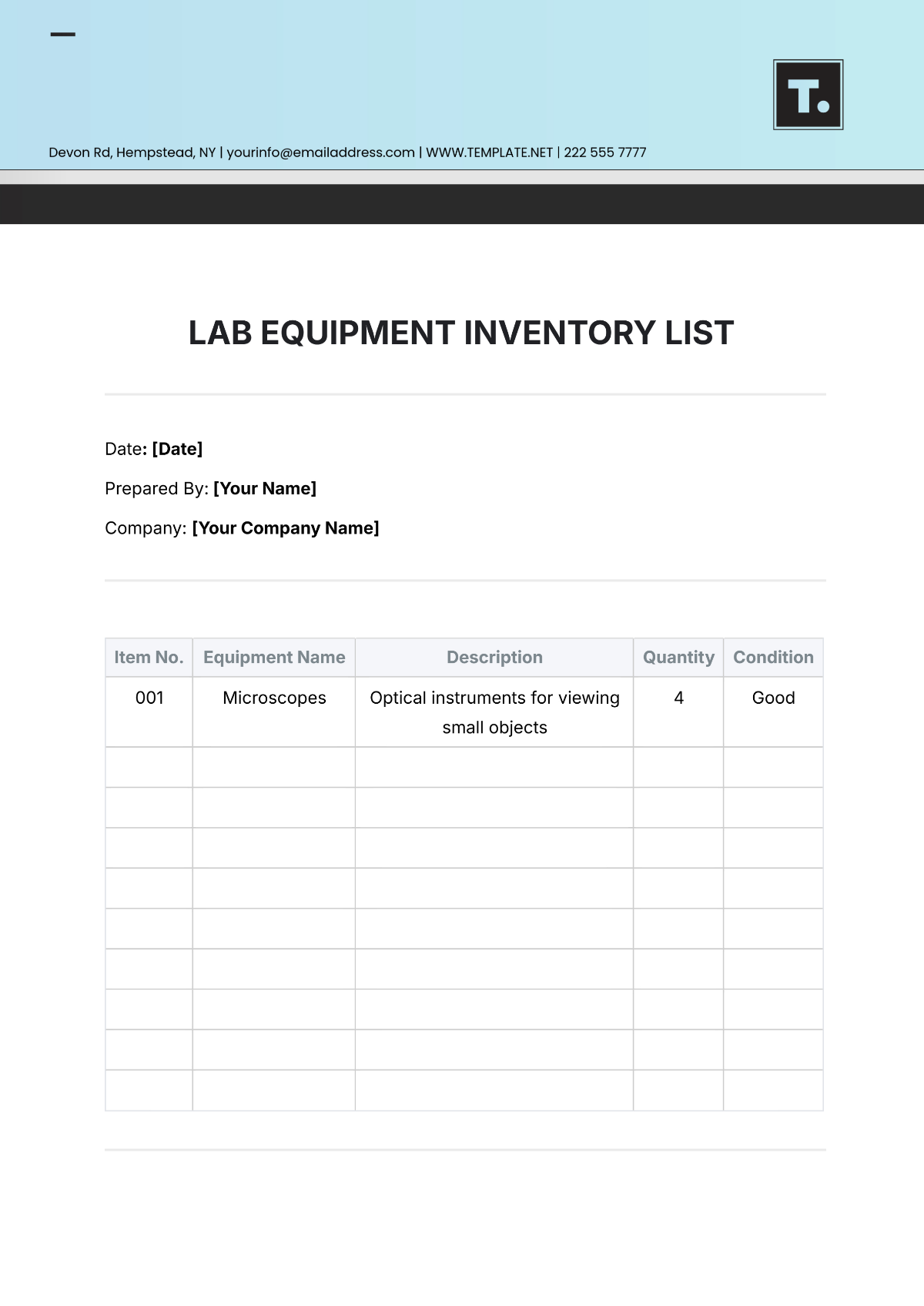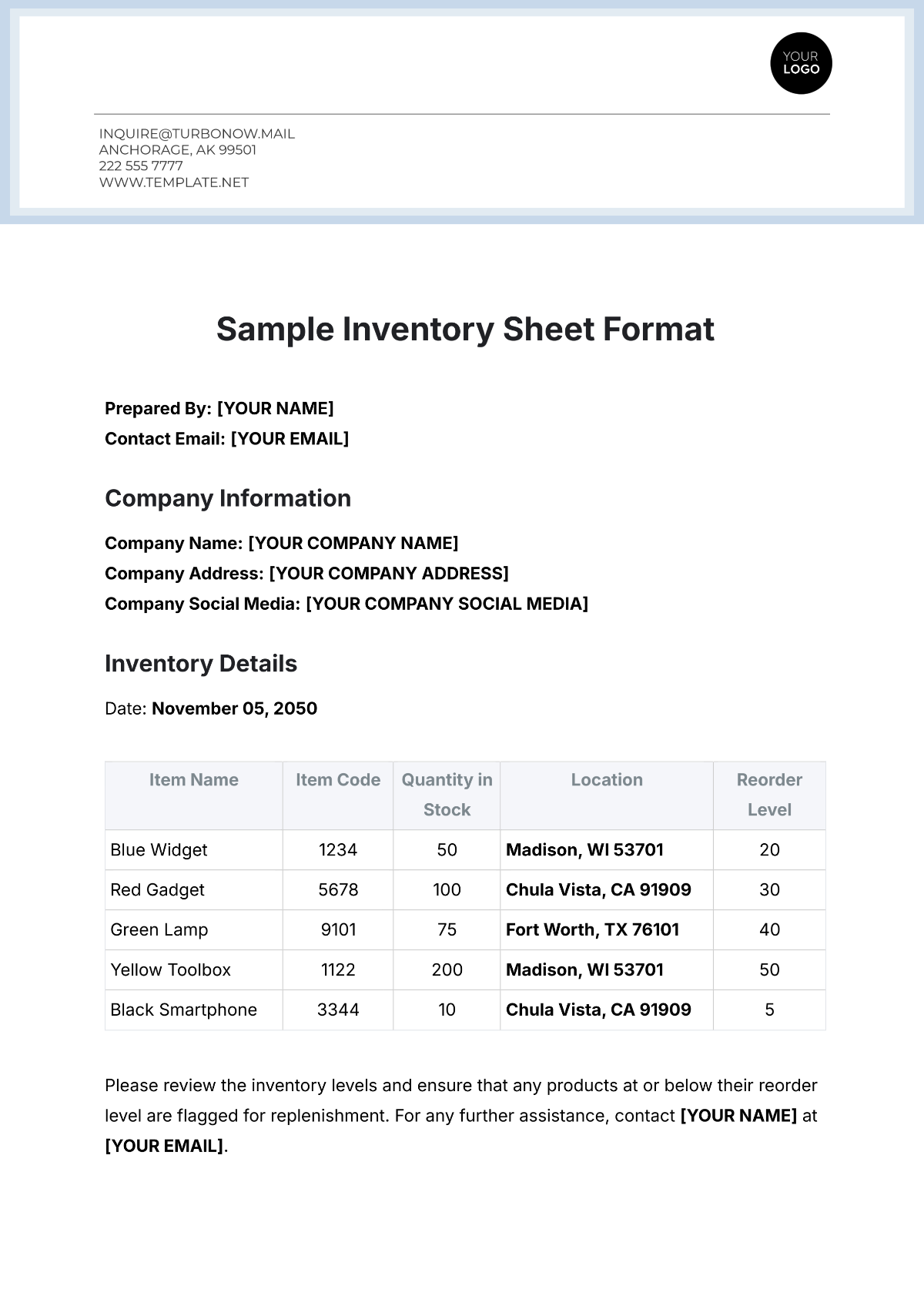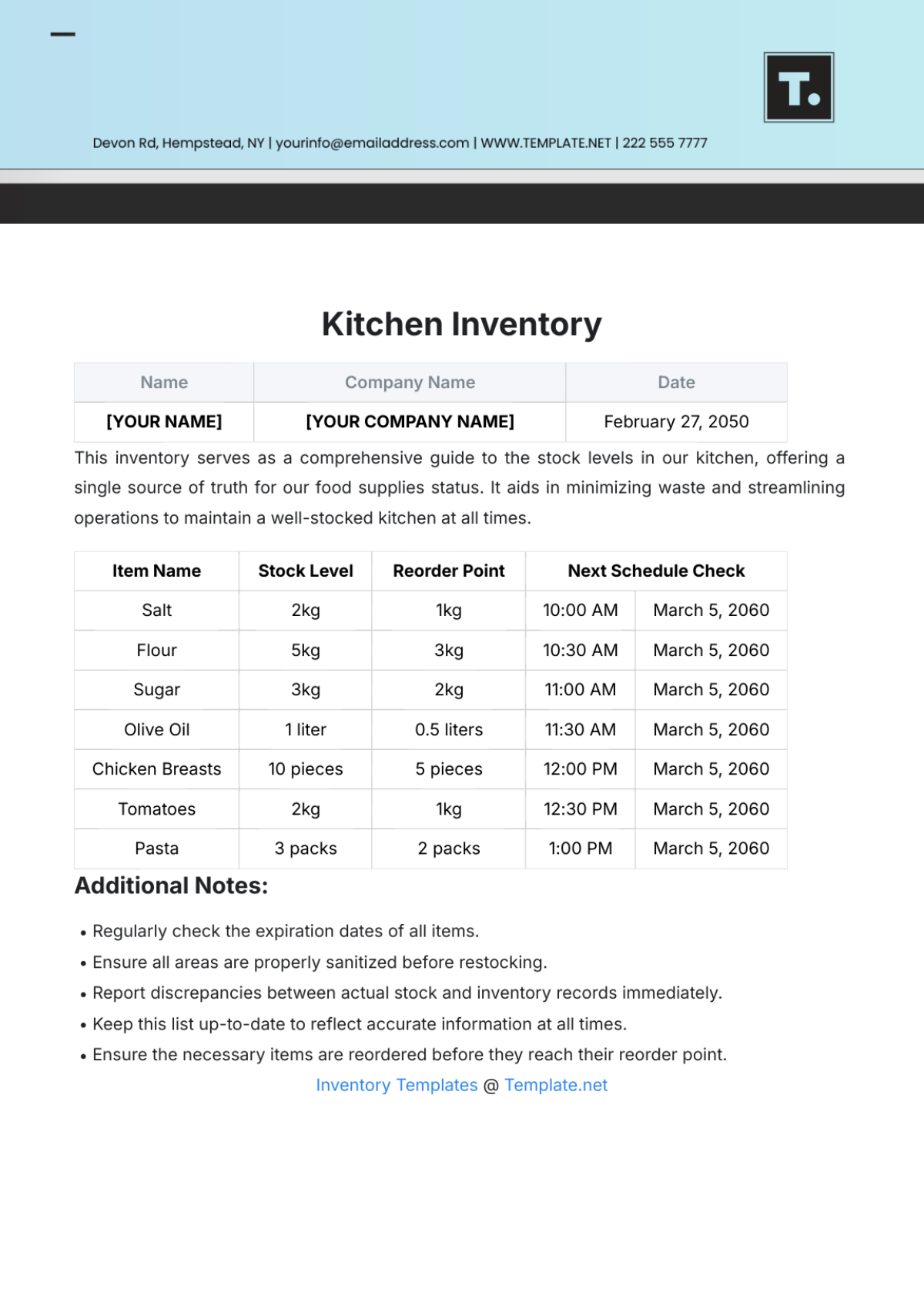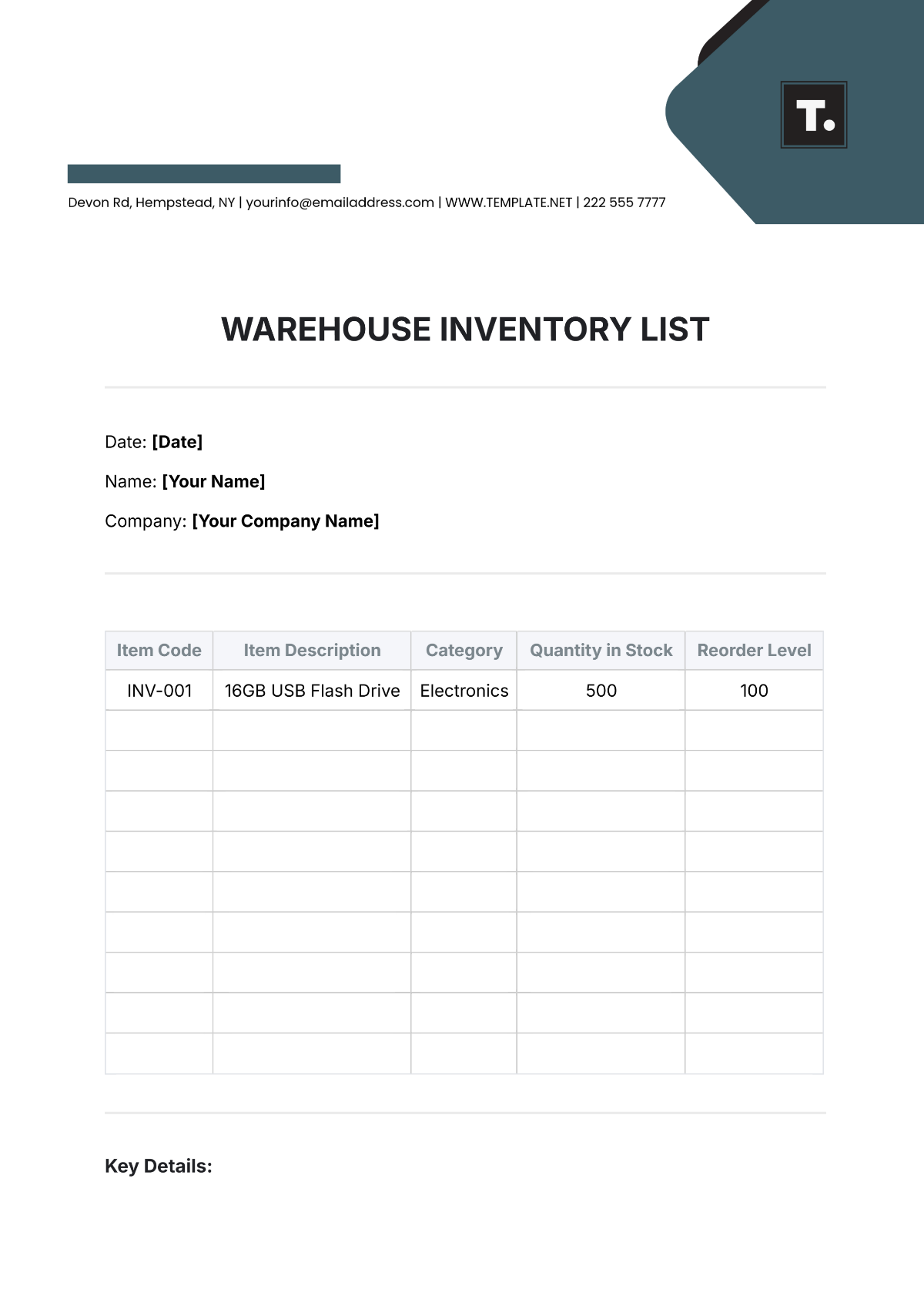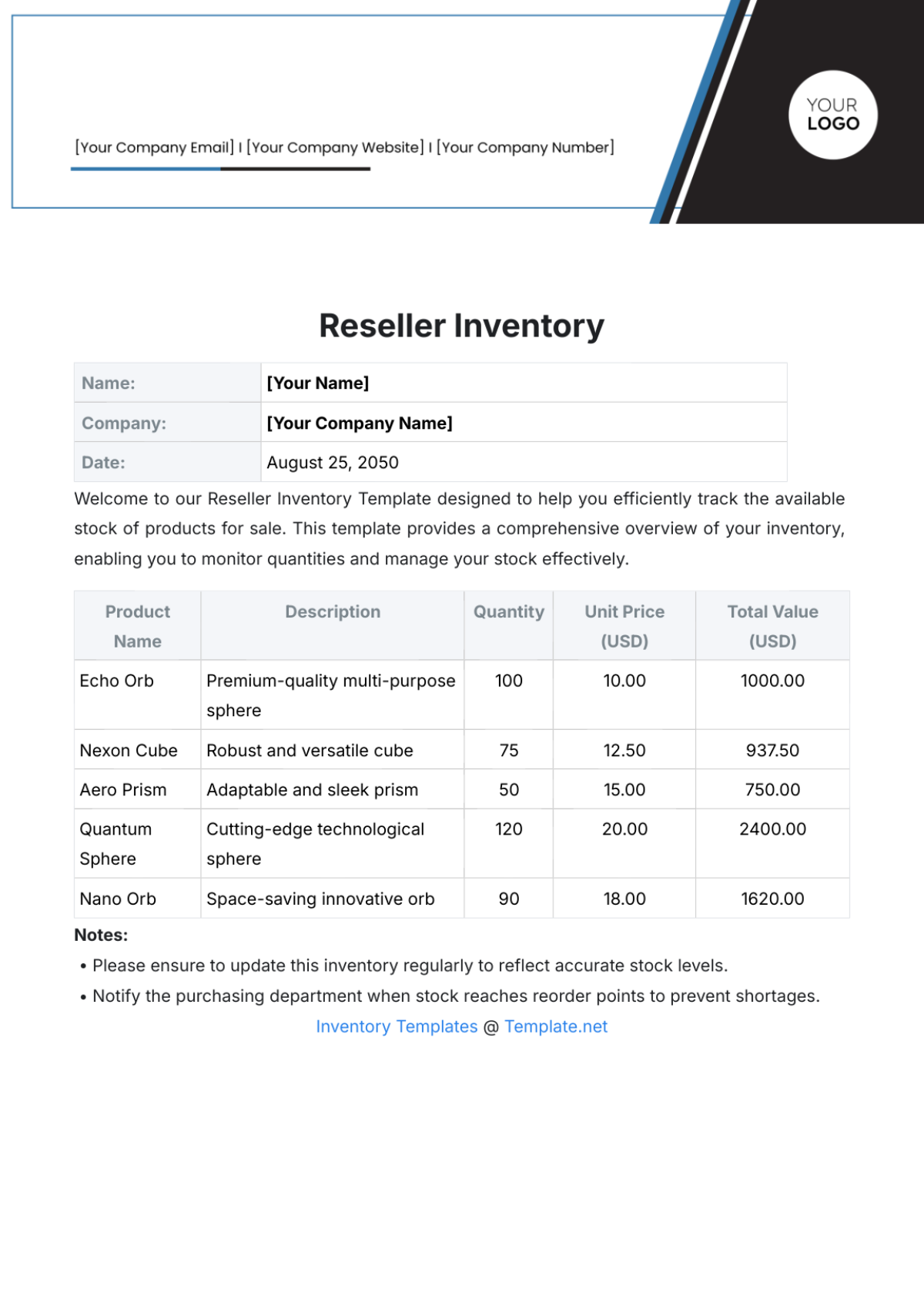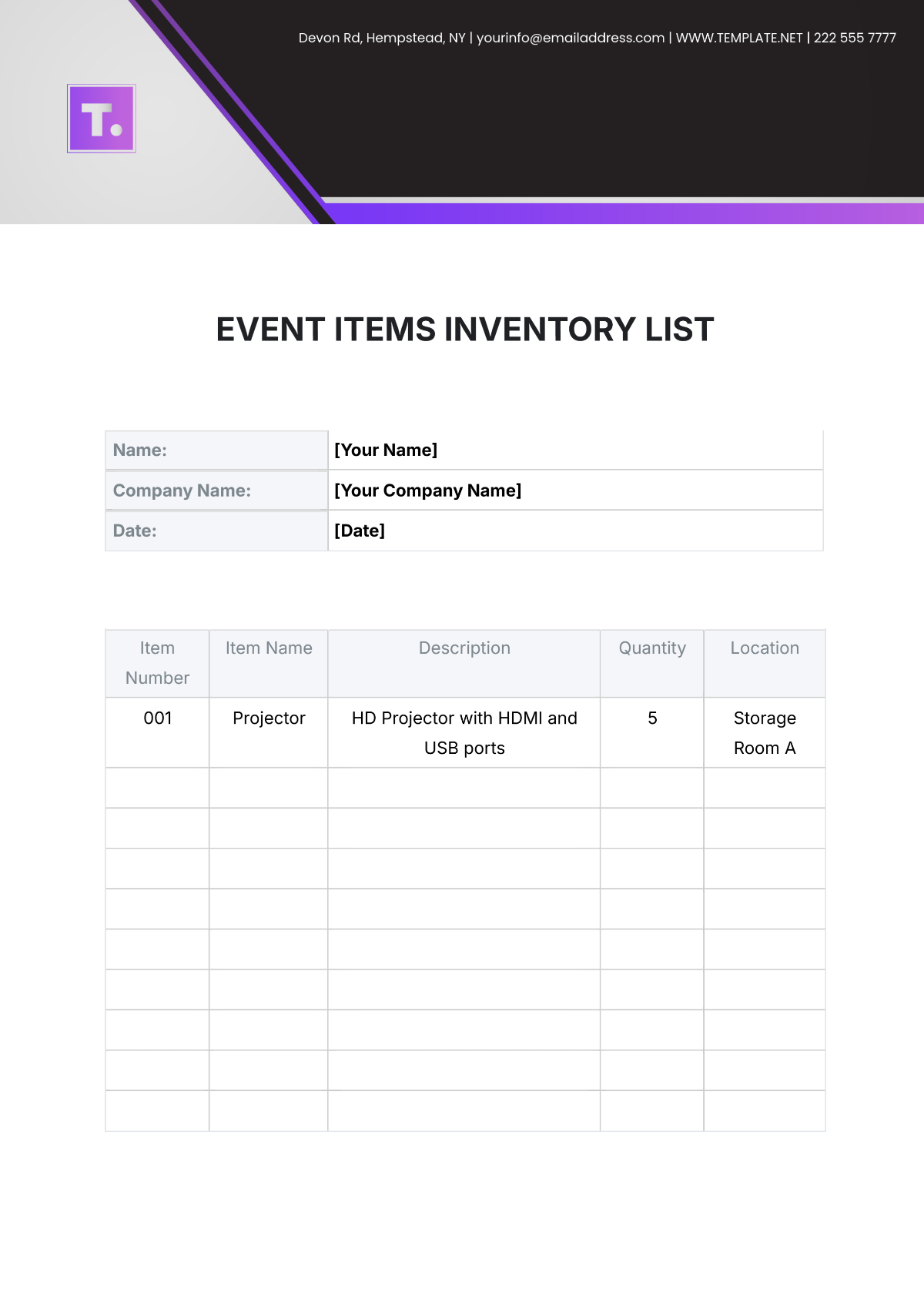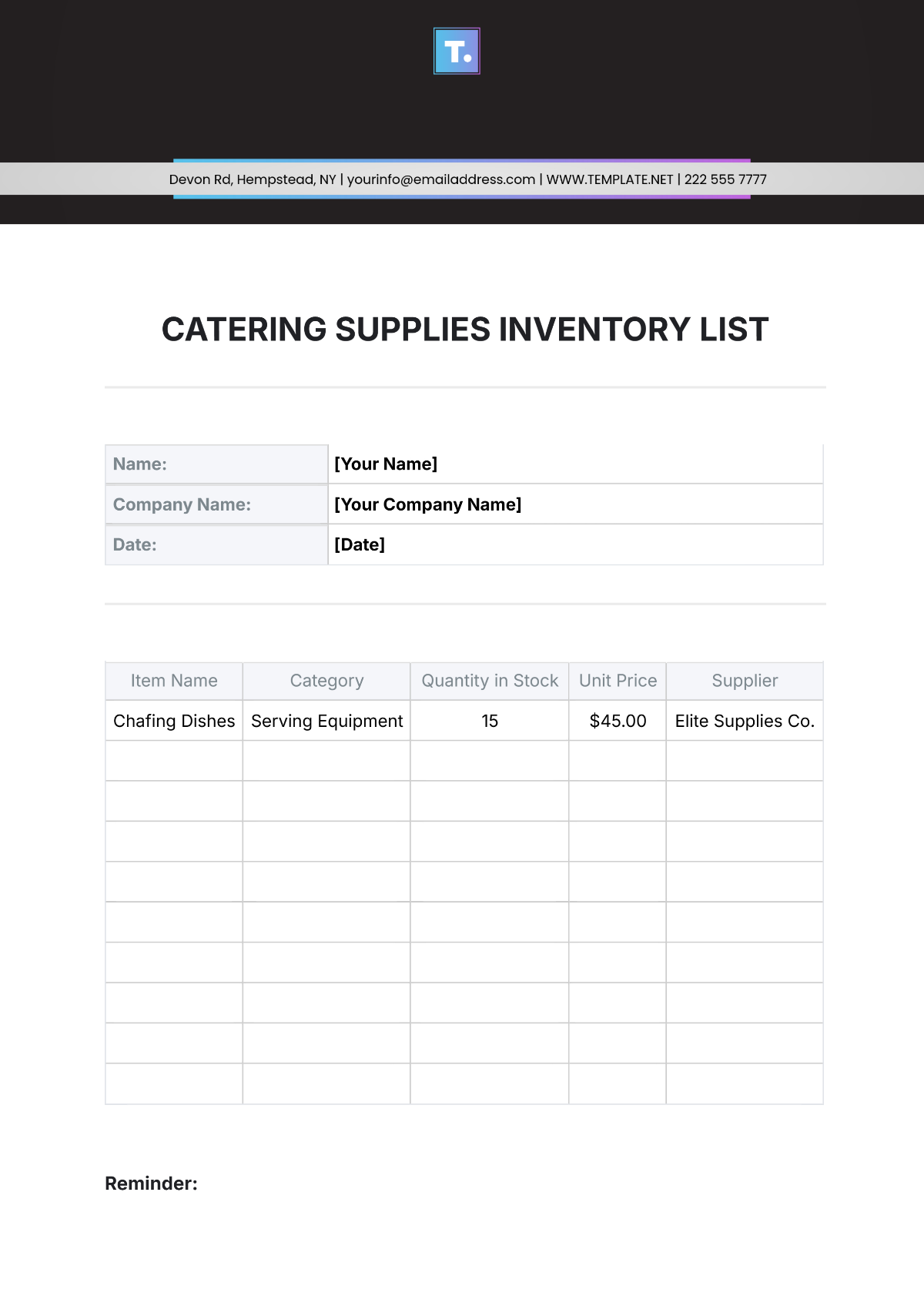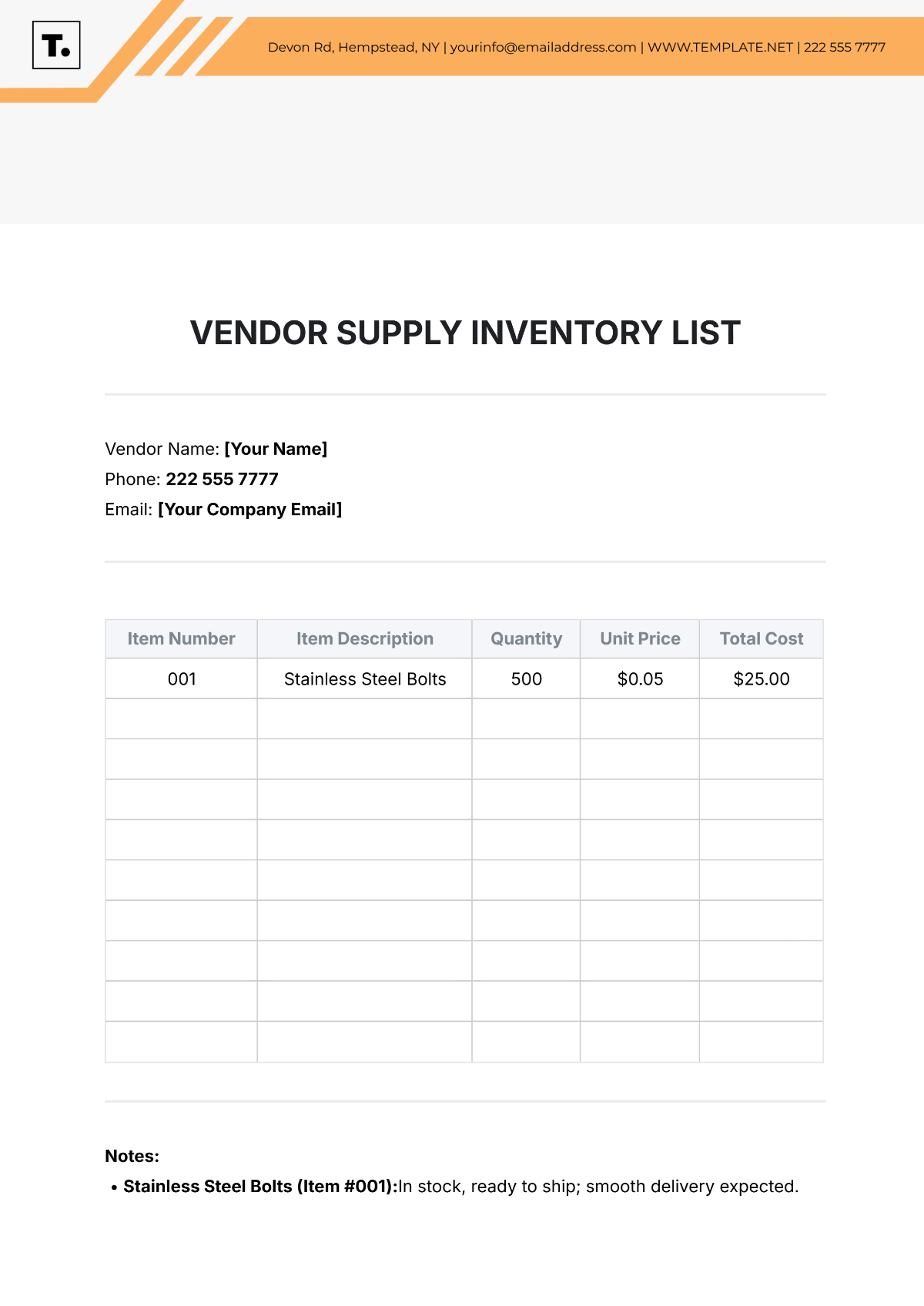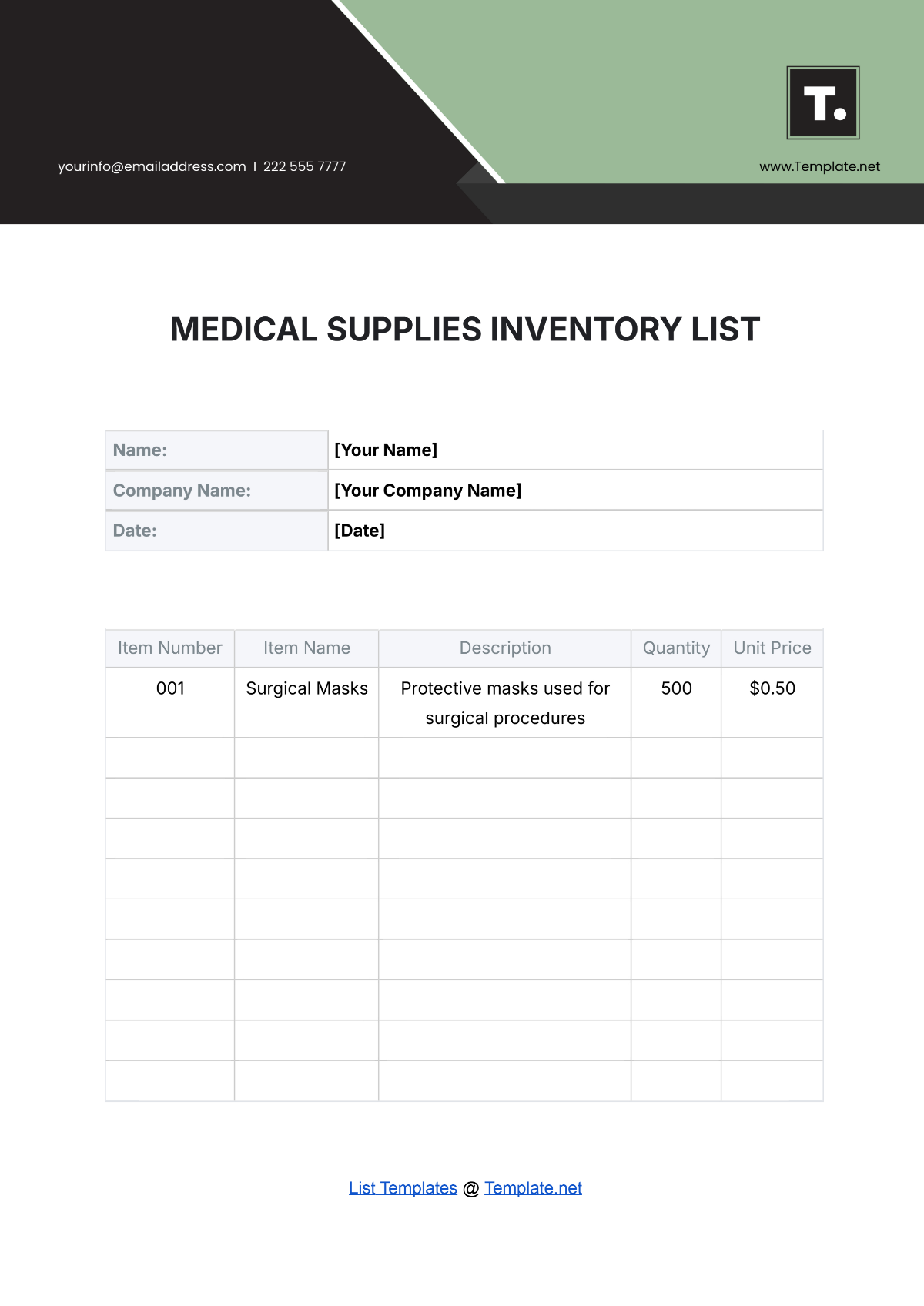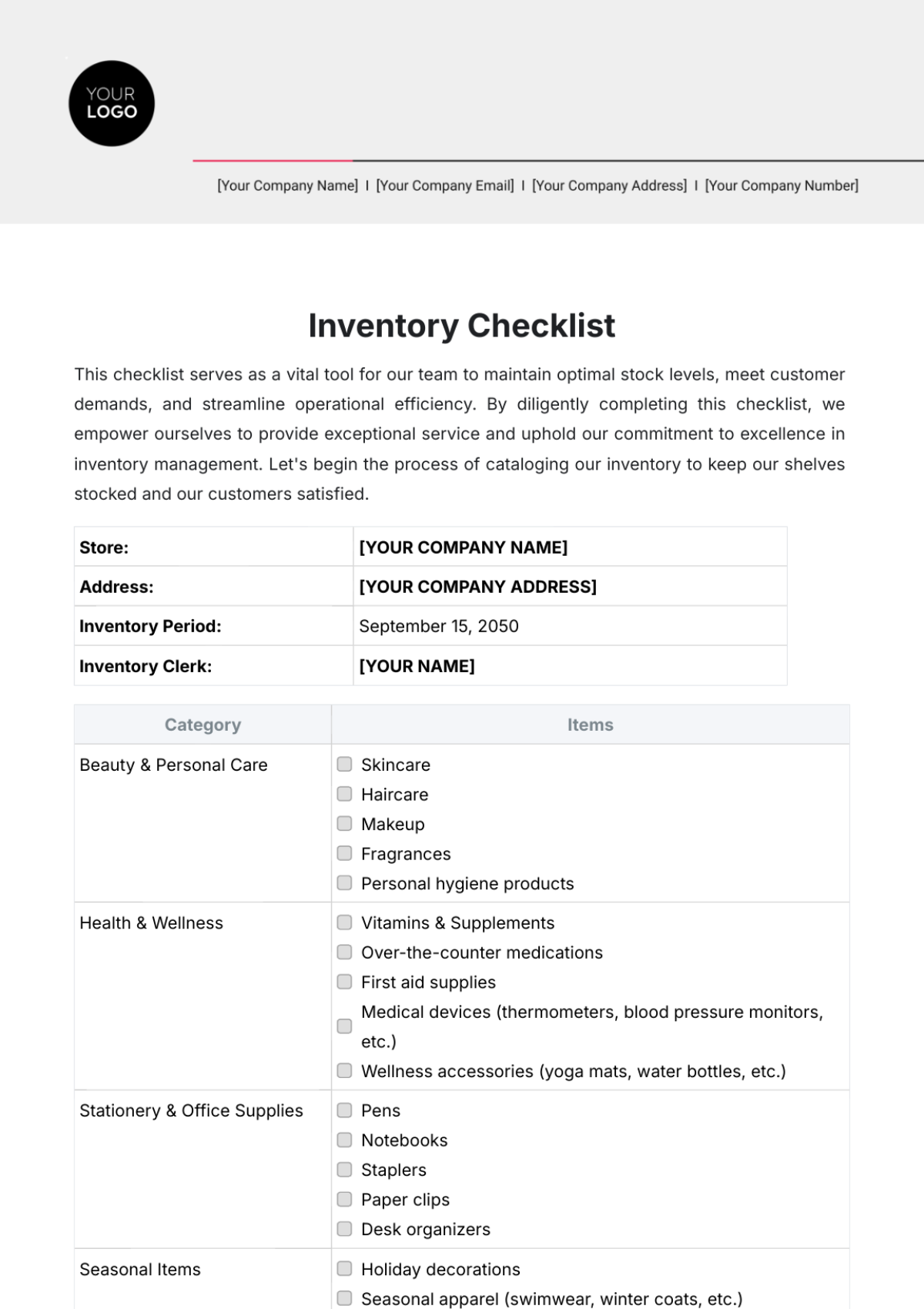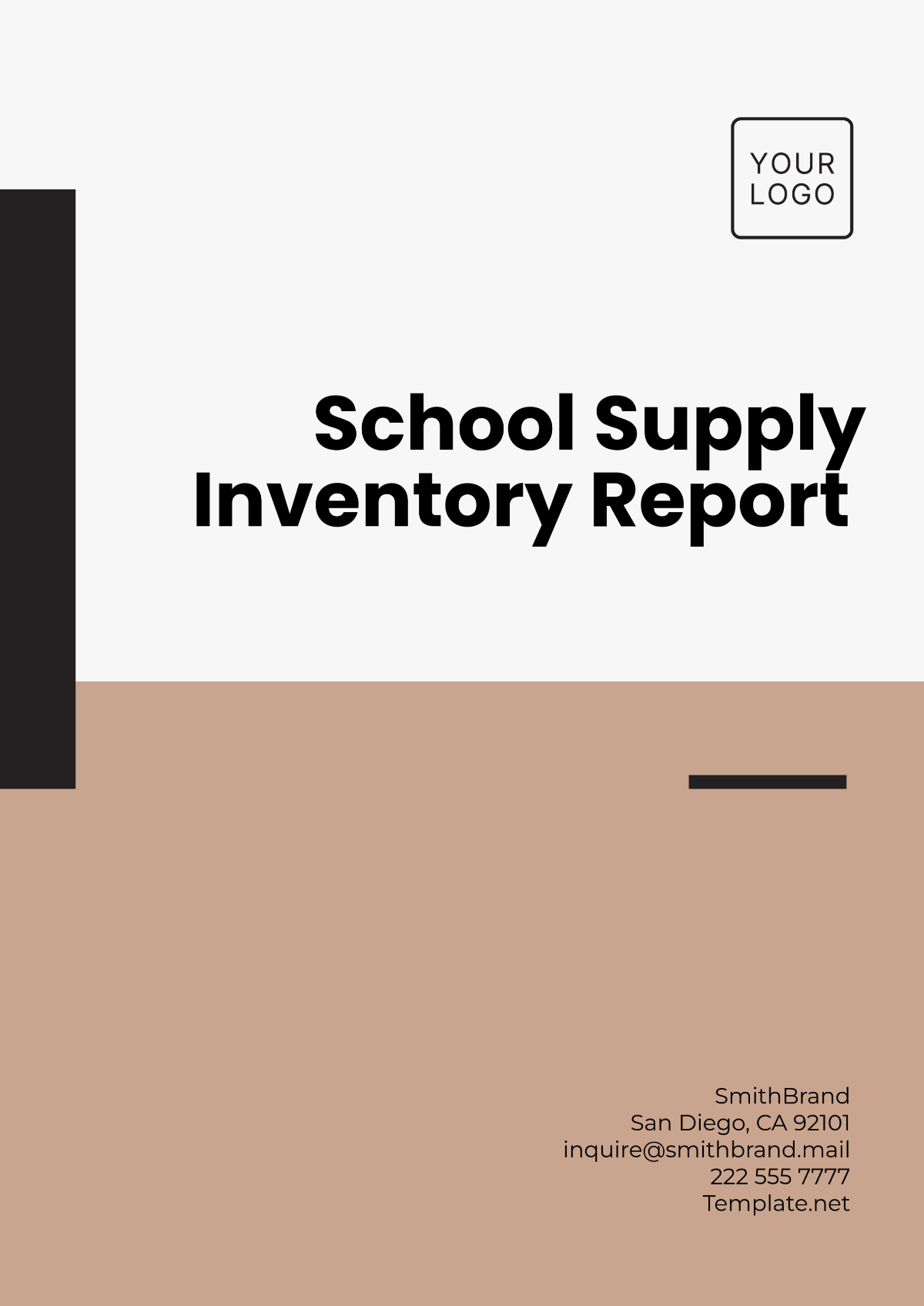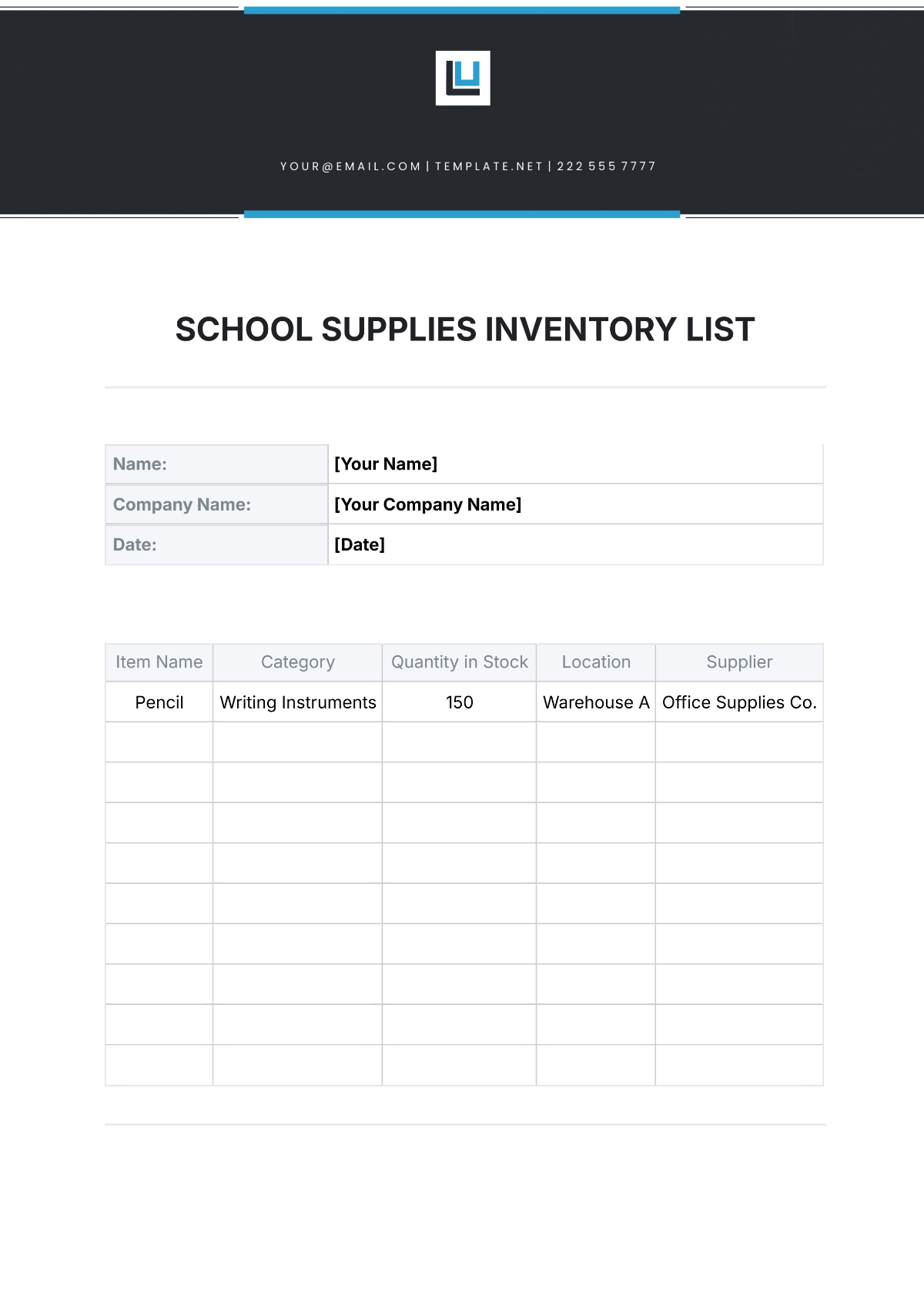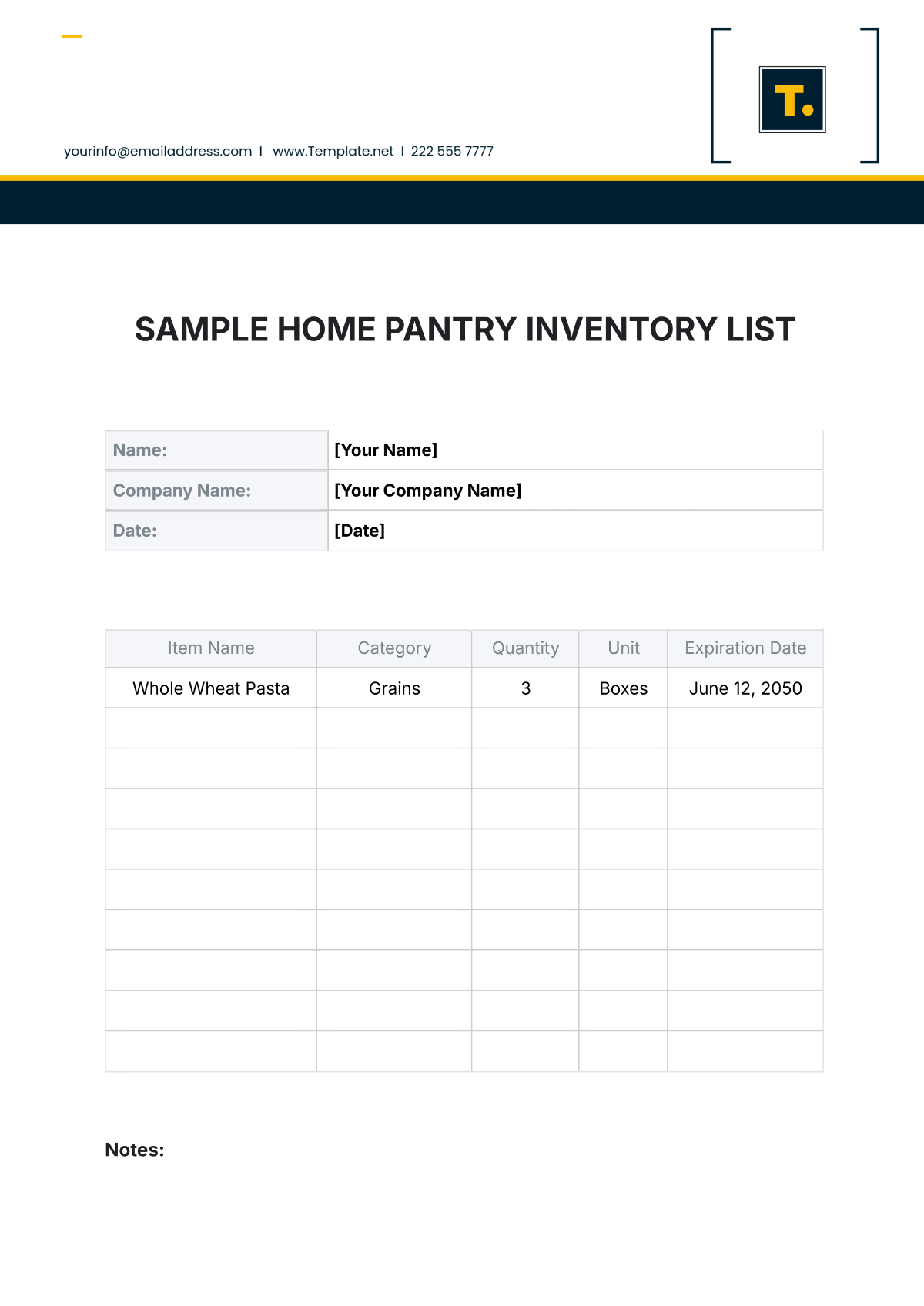Grocery Store Inventory Guideline Layout
I. Introduction
A. Purpose of the Guideline
(Explain the main objectives of the inventory guideline, including improving inventory accuracy and efficiency. Highlight the importance of standardized procedures for maintaining optimal stock levels.)
B. Scope and Applicability
(Define which aspects of inventory management the guidelines cover, such as tracking, ordering, and shelf management. Specify which areas of the store or types of products the guidelines apply to.)
C. Definitions and Key Terms
(Provide clear definitions for technical terms and jargon used throughout the guideline, such as “reorder point” and “FIFO.” Ensure that all employees understand these terms to avoid confusion.)
II. Inventory Tracking
A. Inventory Management System
(Describe the features and benefits of the chosen inventory management software, such as real-time tracking and reporting capabilities. Outline the steps for setting up and configuring the system to meet store needs.)
B. Manual Tracking Methods
(Explain how to maintain accurate inventory records using paper logs or spreadsheets. Provide procedures for regularly updating and checking these manual records to ensure data accuracy.)
C. Barcode and RFID Systems
(Detail the process of implementing barcode or RFID technology to streamline inventory tracking. Include information on how to maintain and troubleshoot these systems to ensure continuous operation.)
III. Stock Replenishment
A. Ordering Procedures
(Outline the process for placing orders based on inventory levels, including setting reorder points and thresholds. Describe how to schedule orders and manage stock levels to avoid shortages.)
B. Supplier Management
(Provide criteria for selecting suppliers and maintaining positive relationships with them. Include methods for evaluating supplier performance and addressing issues related to delivery and quality.)
C. Inventory Forecasting
(Explain how to use historical sales data and seasonal trends to predict future inventory needs. Discuss how to incorporate promotional events and other factors into inventory planning.)
IV. Product Categorization
A. Category Structure
(Describe how to organize products into categories and subcategories for efficient management. Explain the benefits of this structure for tracking and reporting purposes.)
B. Labeling and Coding
(Detail the process of assigning SKUs (Stock Keeping Units) and creating shelf labels to identify products. Include guidelines for maintaining consistency in labeling and coding practices.)
C. Product Placement
(Provide strategies for placing products on shelves to maximize visibility and sales. Include recommendations for creating effective planograms to optimize product placement.)
V. Shelf Management
A. Product Placement Strategies
(Describe how to use high-traffic areas and eye-level placement to increase product visibility and sales. Provide tips for rotating products to maintain an appealing display.)
B. Shelf Organization
(Explain the FIFO (First In, First Out) method for managing product rotation and ensuring older stock is sold first. Include guidelines for date labeling to facilitate proper rotation.)
C. Maintenance and Replenishment
(Outline procedures for regularly checking and restocking shelves to prevent empty spaces and maintain inventory levels. Provide a schedule for these tasks to ensure they are performed consistently.)
VI. Receiving and Inspection
A. Delivery Procedures
(Describe the process for receiving deliveries, including scheduling and coordination with suppliers. Provide steps for checking in deliveries to ensure they match order quantities and specifications.)
B. Product Inspection
(Detail the procedures for inspecting products upon delivery for quality and damage. Explain how to verify expiry dates and handle any issues that arise during the inspection process.)
C. Inventory Records
(Explain how to update inventory records to reflect new stock levels accurately. Describe procedures for handling discrepancies between physical stock and recorded inventory.)
VII. Waste Management
A. Handling Expired Products
(Describe procedures for removing expired products from shelves and updating inventory records. Provide guidelines for proper disposal or donation of expired items.)
B. Managing Damaged Goods
(Outline the steps for reporting and documenting damaged goods. Include procedures for handling returns to suppliers and processing refunds or replacements.)
C. Reducing Waste
(Provide strategies for optimizing inventory turnover to minimize waste. Discuss methods for donating unsellable products and improving stock management to reduce spoilage.)
VIII. Audit Procedures
A. Regular Audits
(Describe the frequency and schedule for conducting inventory audits. Provide a checklist for auditors to ensure all aspects of inventory management are reviewed.)
B. Reconciling Discrepancies
(Explain how to investigate and resolve discrepancies between inventory records and physical stock. Provide steps for identifying root causes and implementing corrective actions.)
C. Reporting and Documentation
(Outline the format and content for audit reports, including findings and recommendations. Describe procedures for maintaining records of audits and follow-up actions.)
IX. Safety and Compliance
A. Health and Safety Regulations
(Detail the regulations related to the storage and handling of food products, including temperature control and sanitation. Provide guidelines to ensure compliance with health and safety standards.)
B. Compliance with Local Laws
(Explain the legal requirements for inventory management, including licensing and reporting obligations. Provide steps for ensuring the store adheres to all applicable laws and regulations.)
C. Employee Safety Training
(Describe the training programs for employees on safety protocols and procedures related to inventory management. Include methods for evaluating and updating training programs as needed.)
X. Employee Training
A. Training Program Development
(Outline the process for developing a comprehensive training program, including curriculum design and materials preparation. Describe how to tailor training to different employee roles.)
B. Implementation
(Provide a plan for delivering training sessions, including scheduling and methods of instruction. Explain how to track employee progress and ensure they meet training requirements.)
C. Ongoing Training and Development
(Describe how to offer refresher courses and skill upgrades to keep employees current with inventory management practices. Provide methods for evaluating the effectiveness of ongoing training.)
